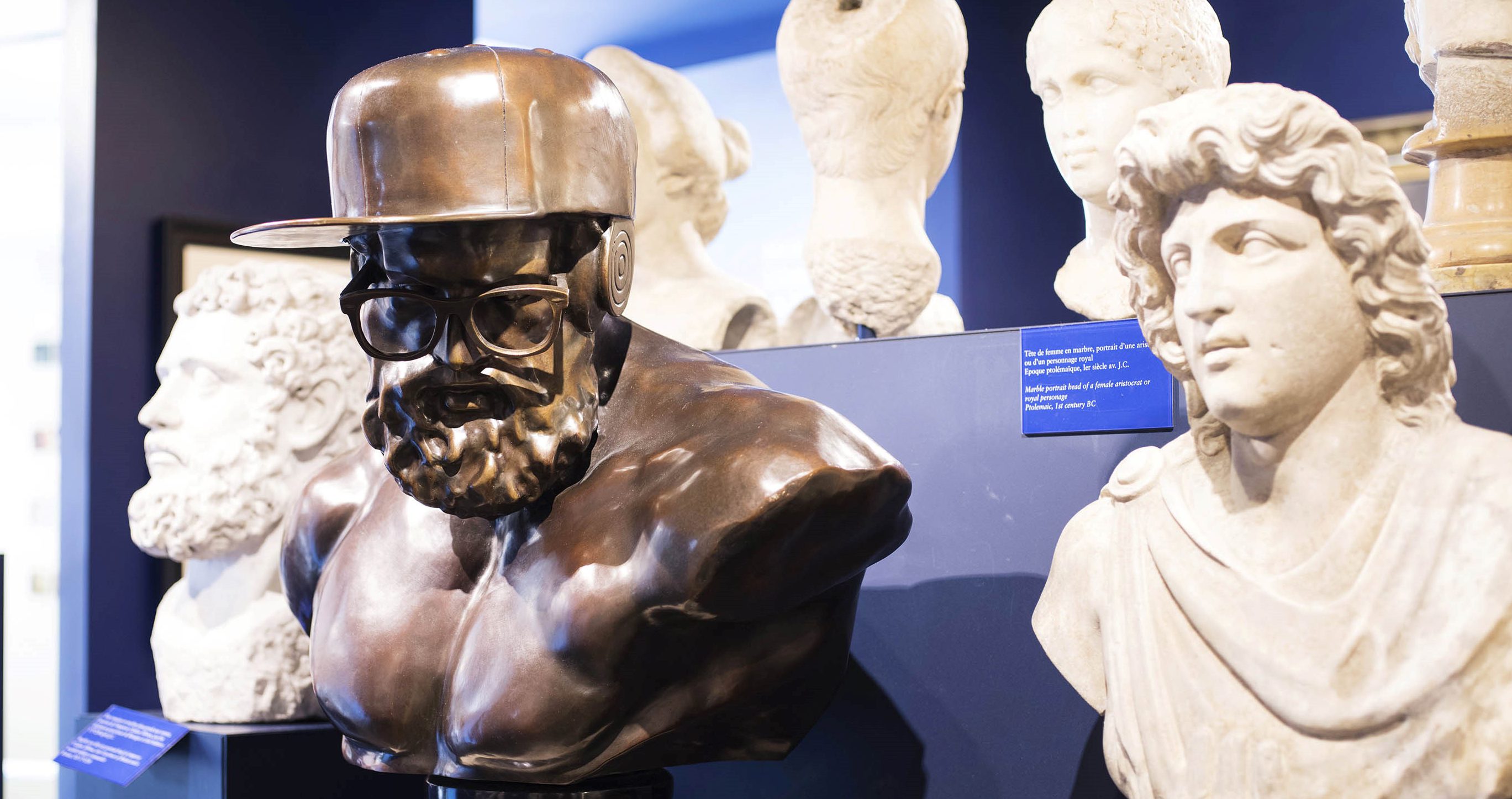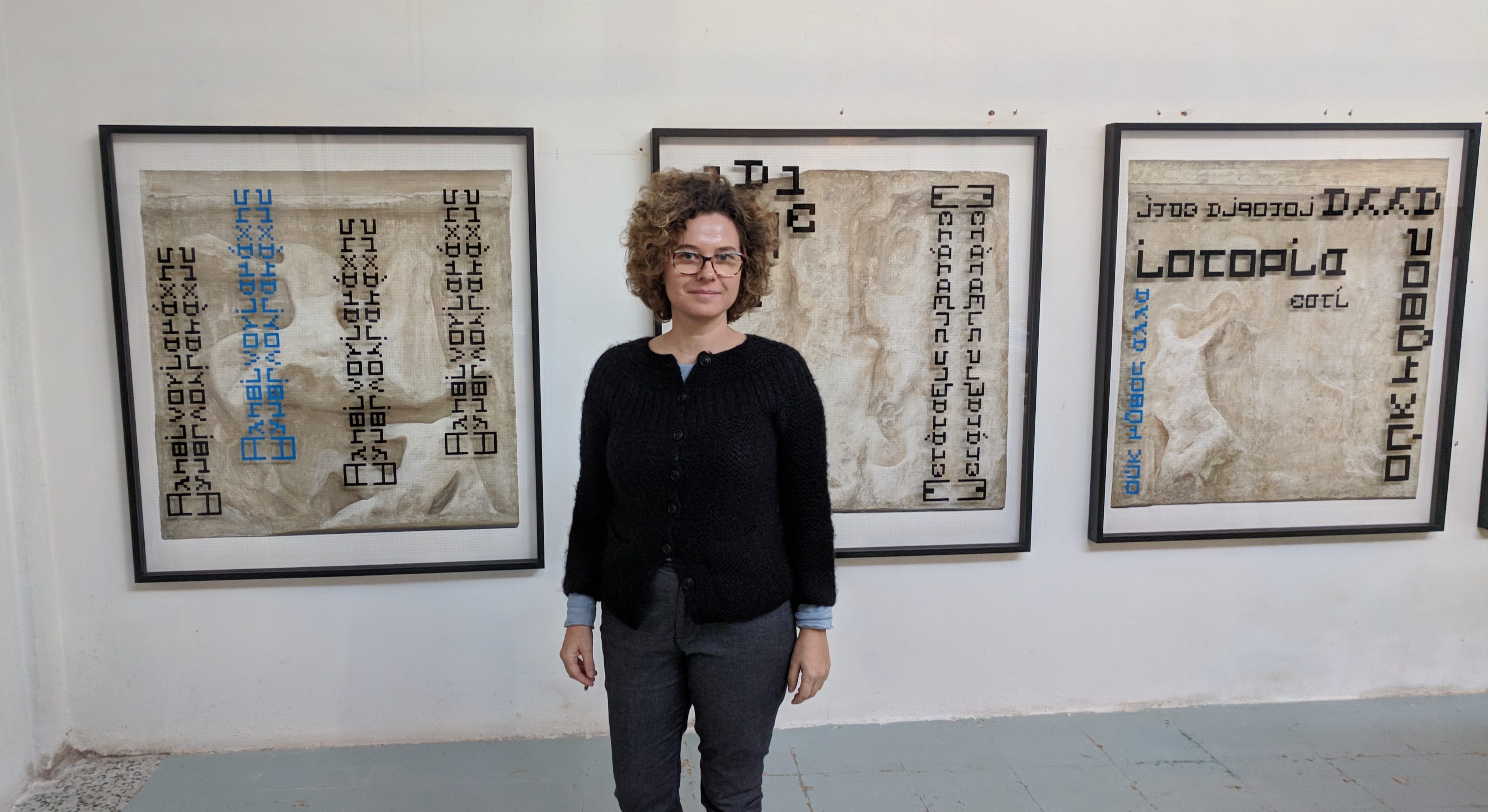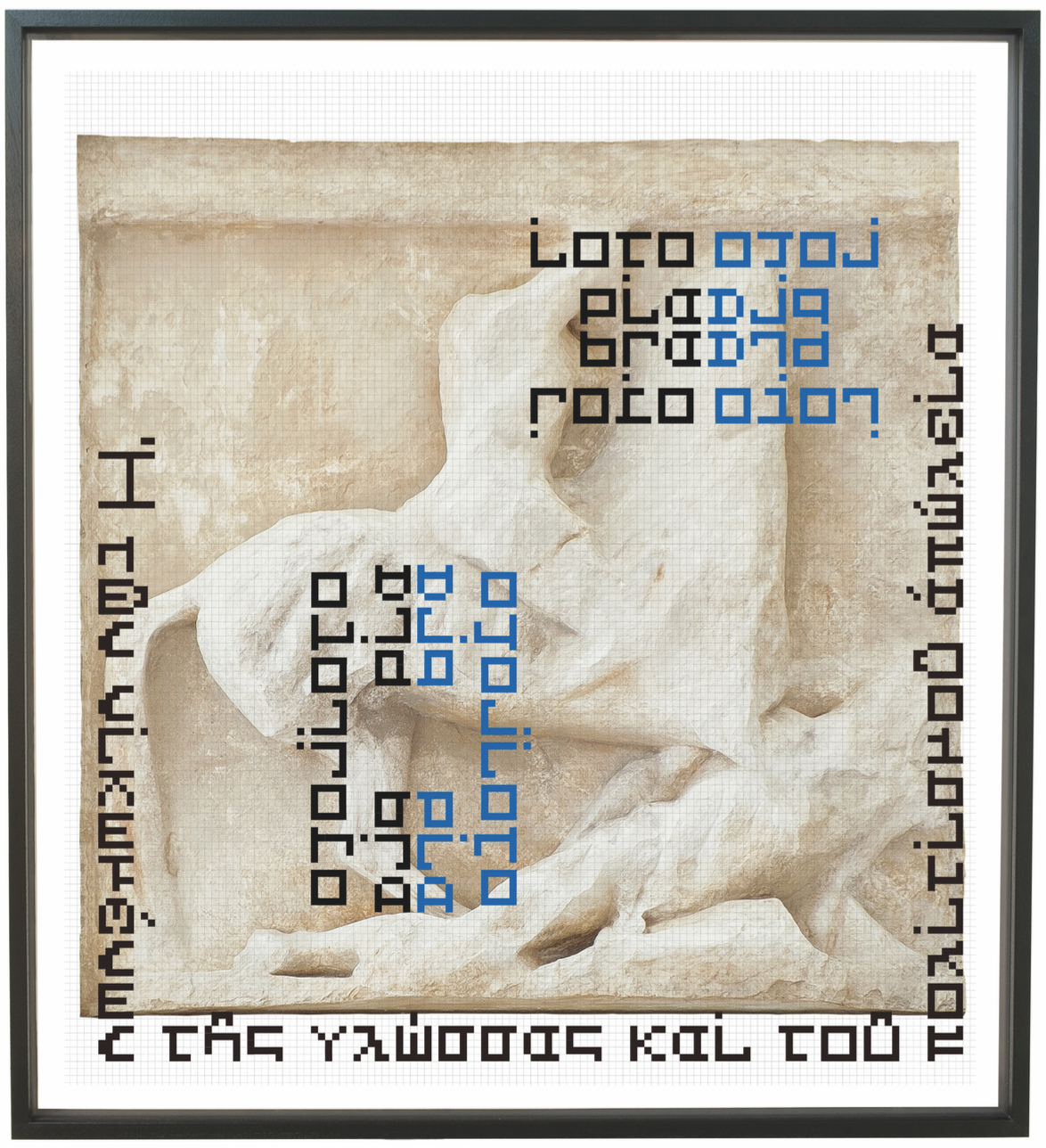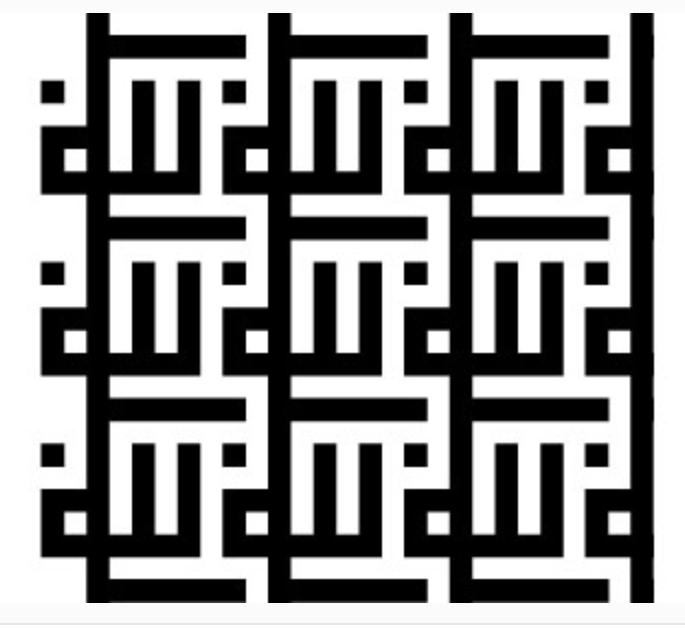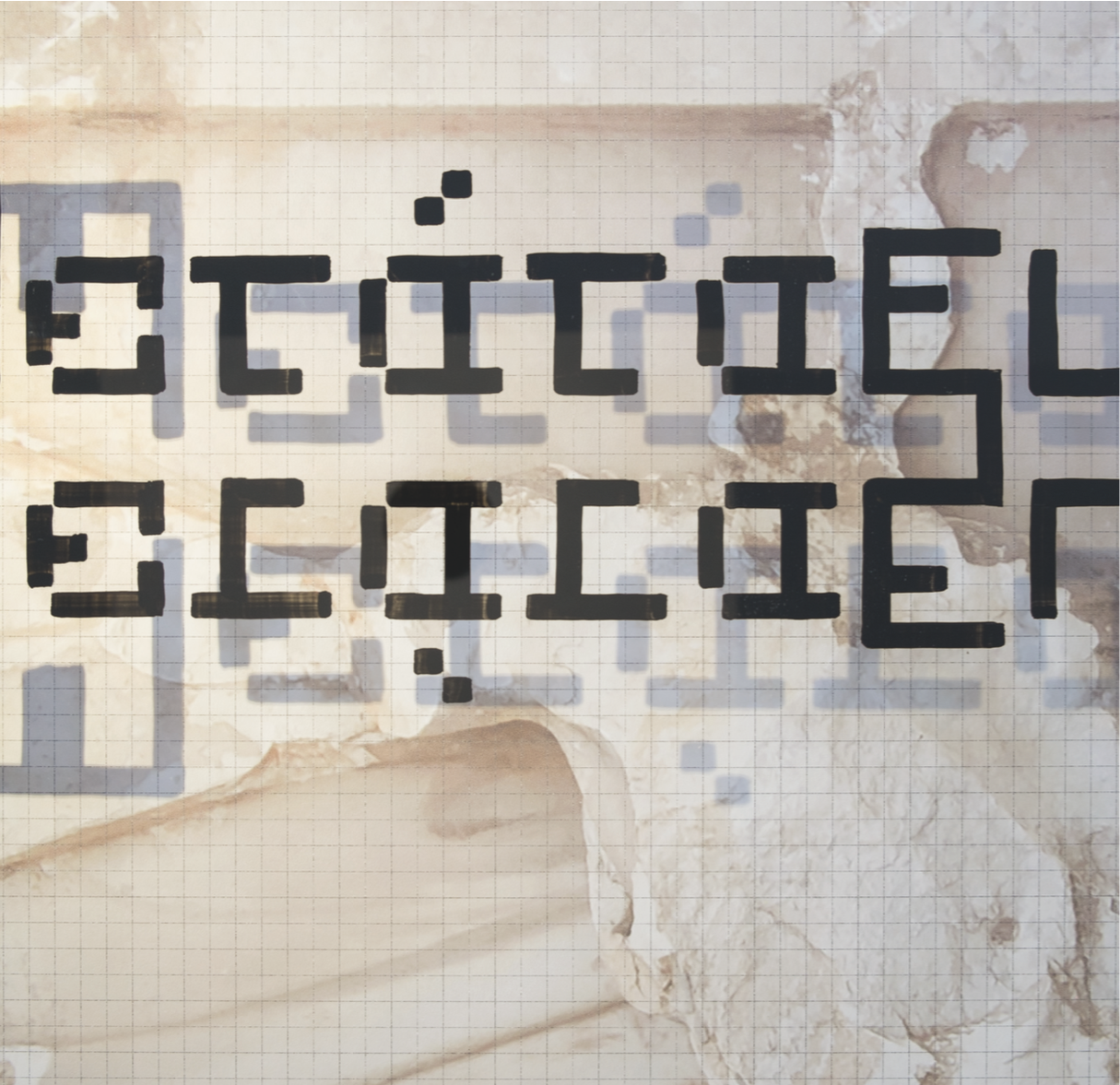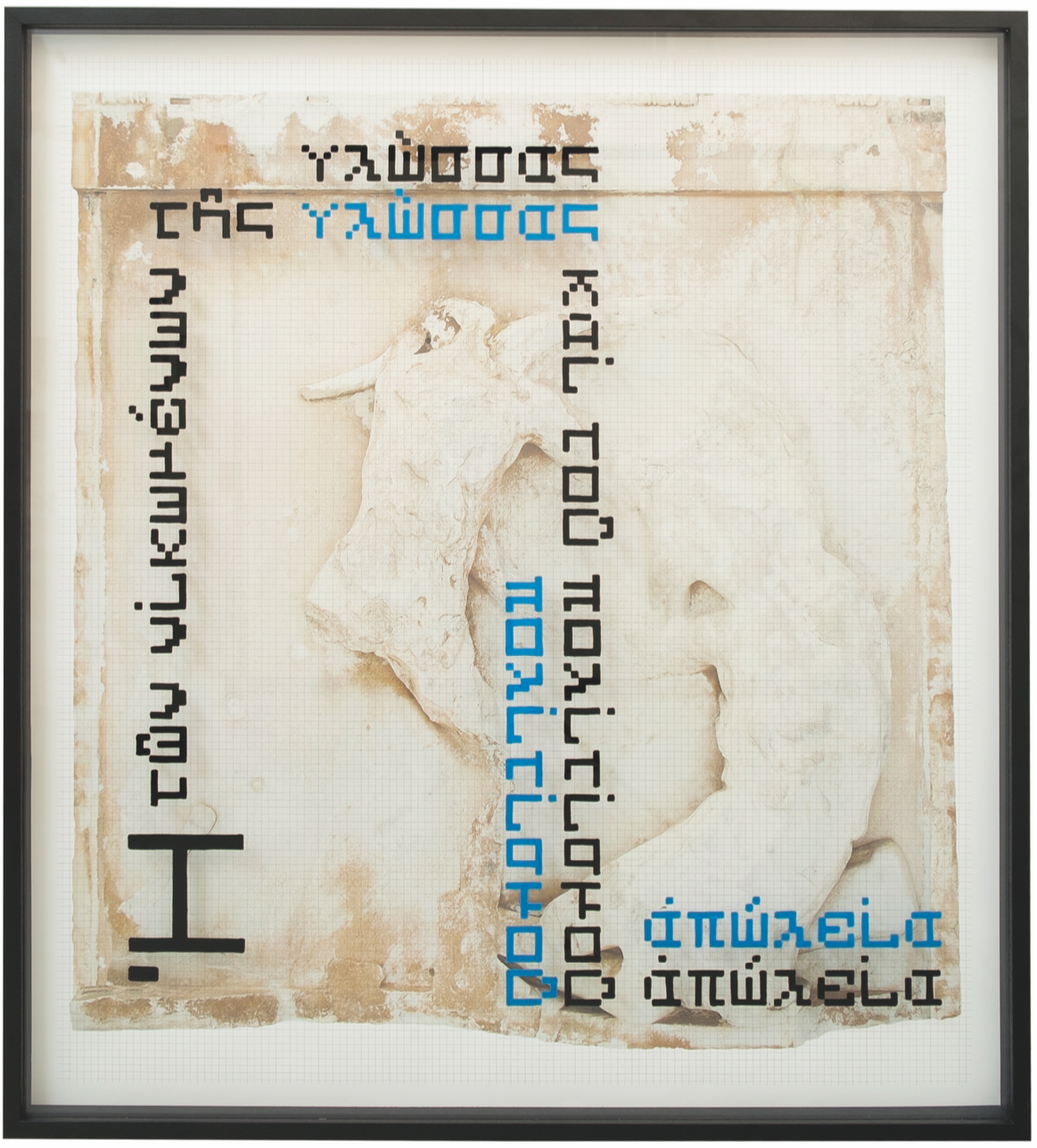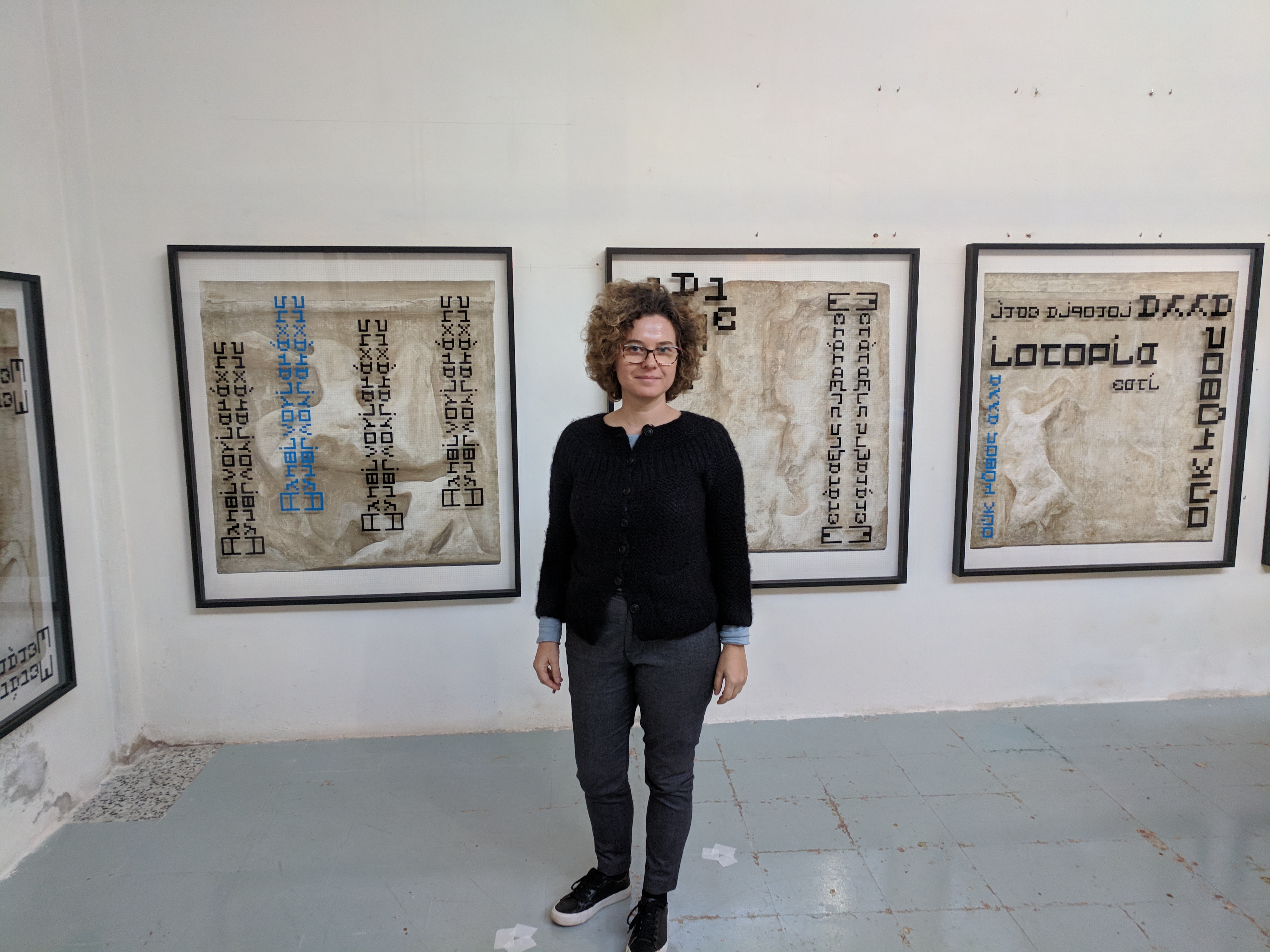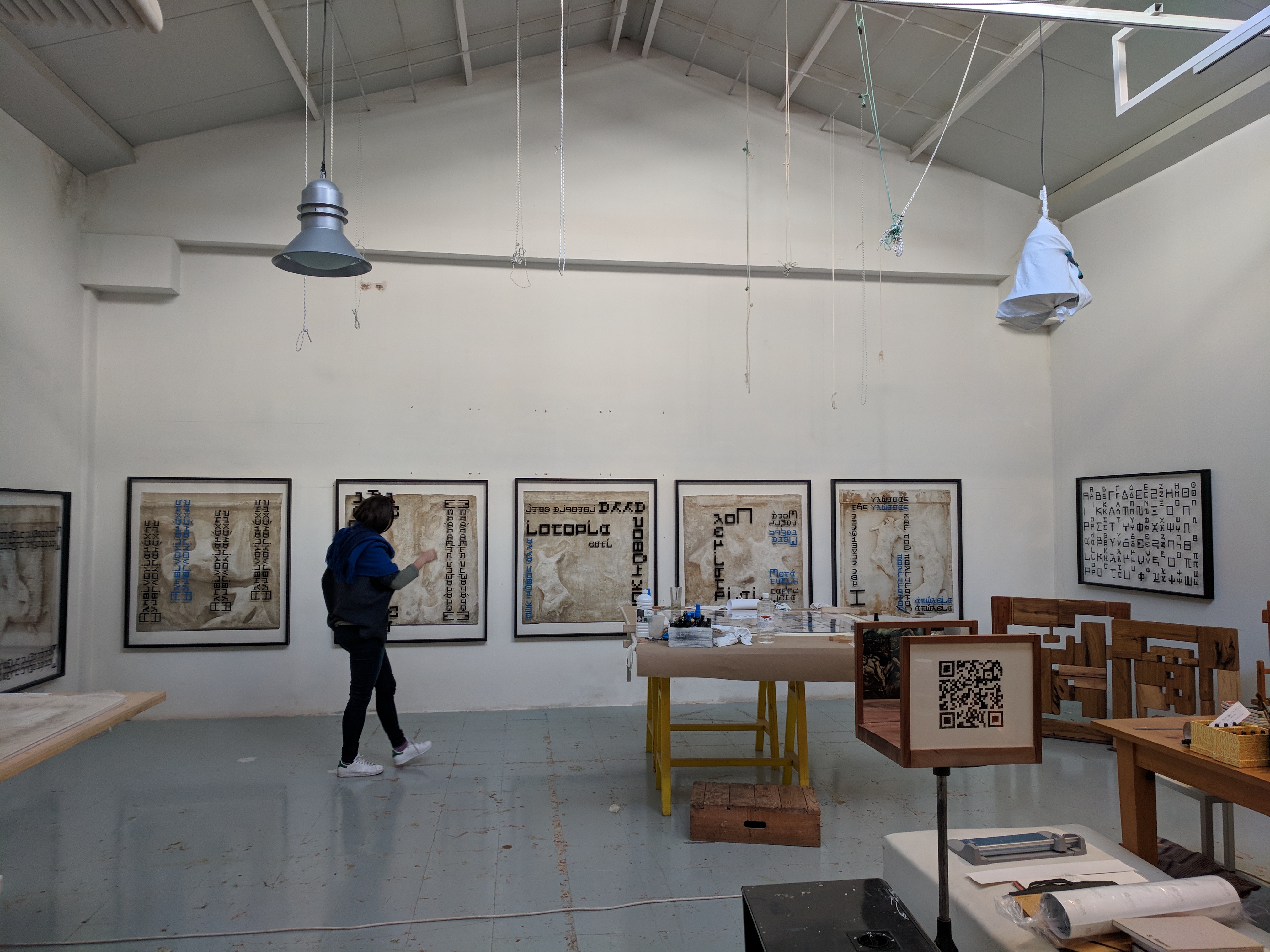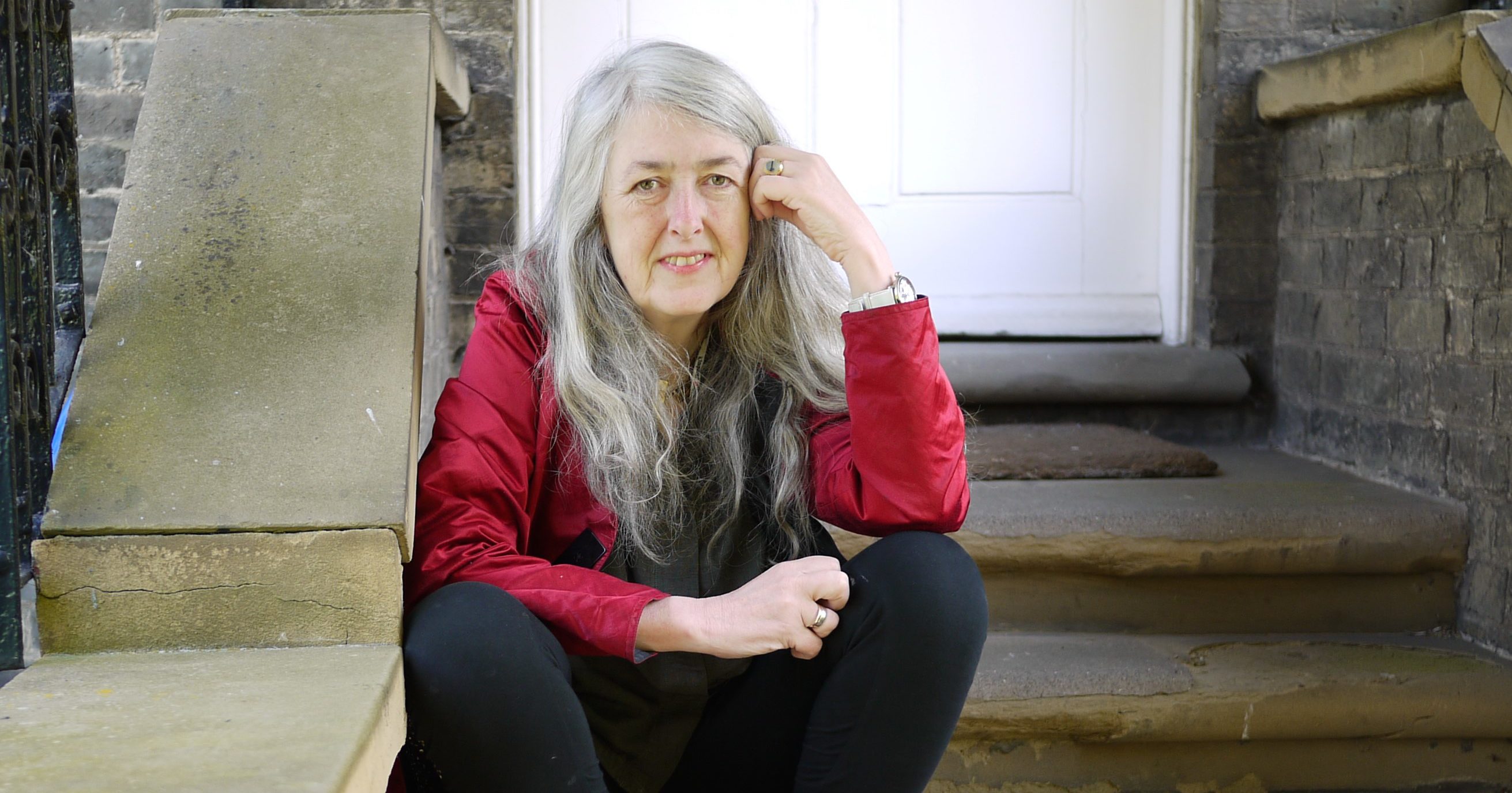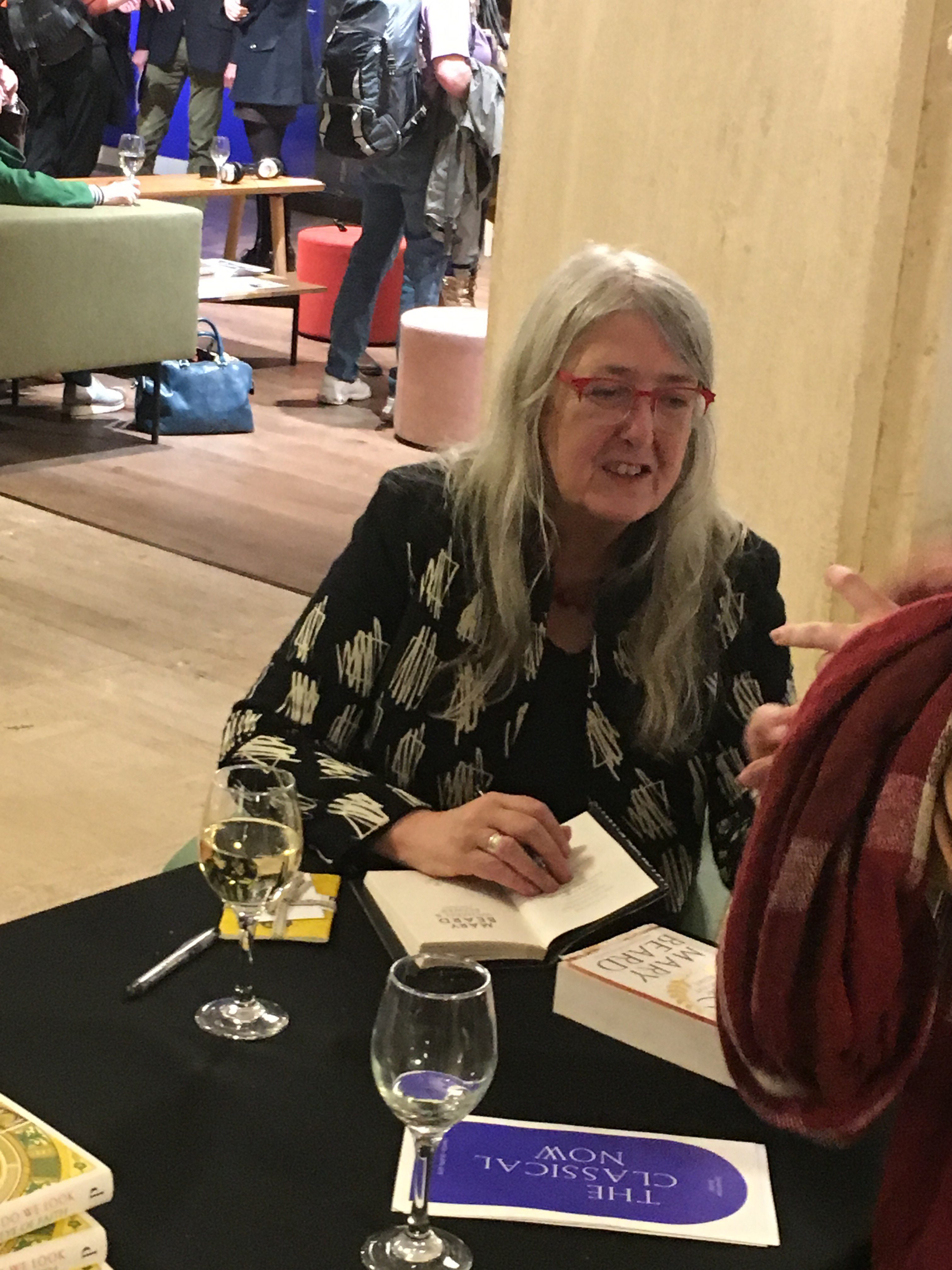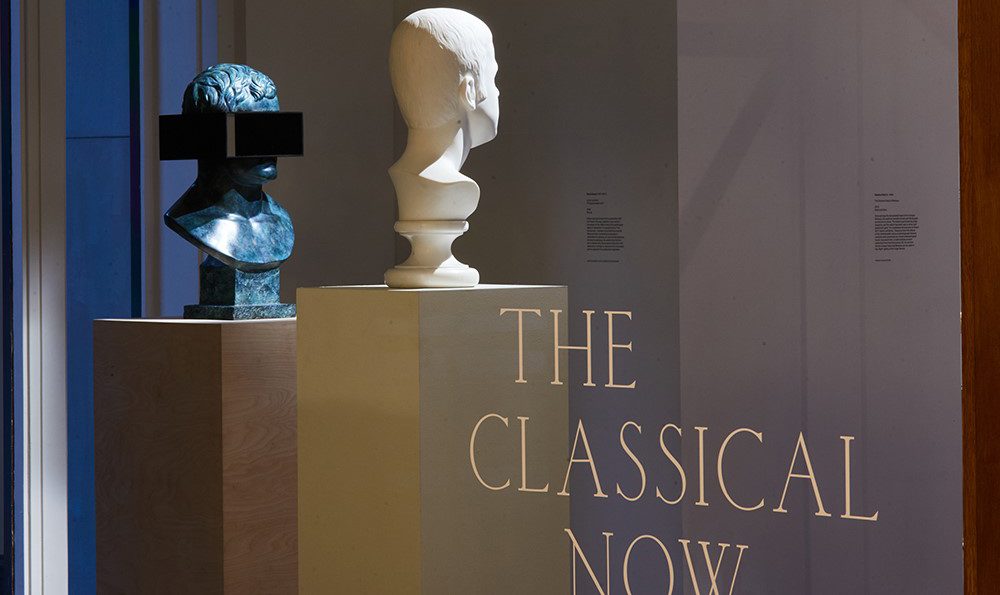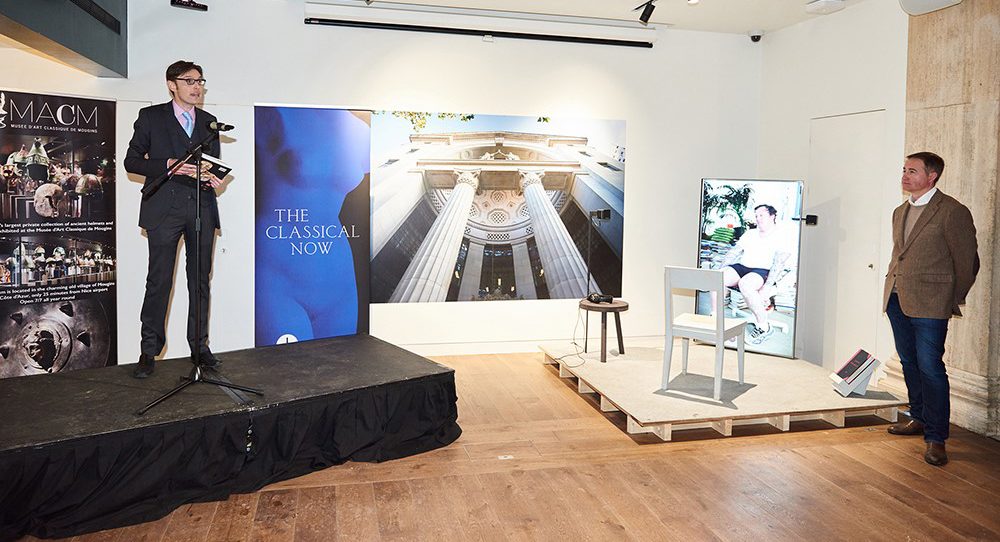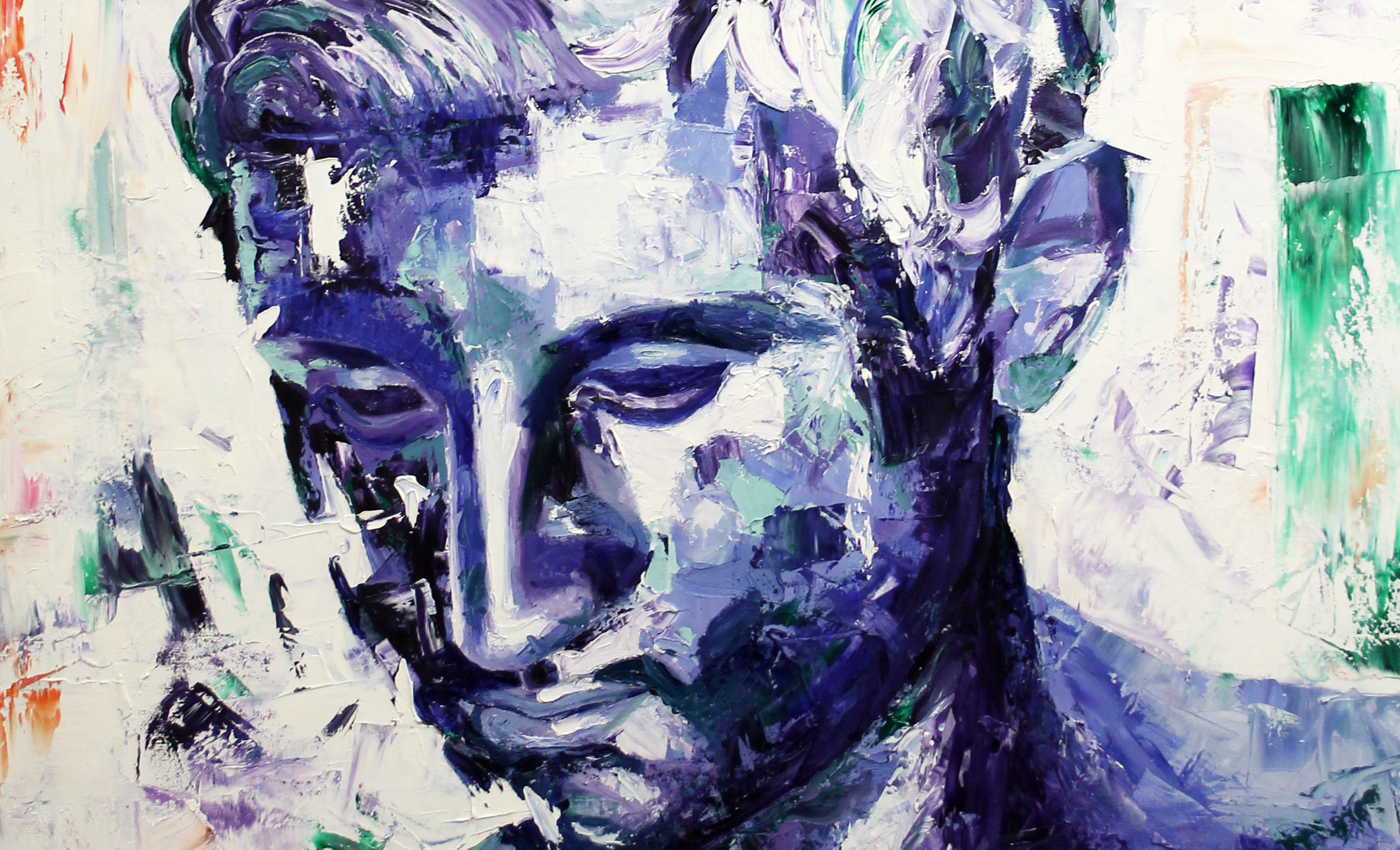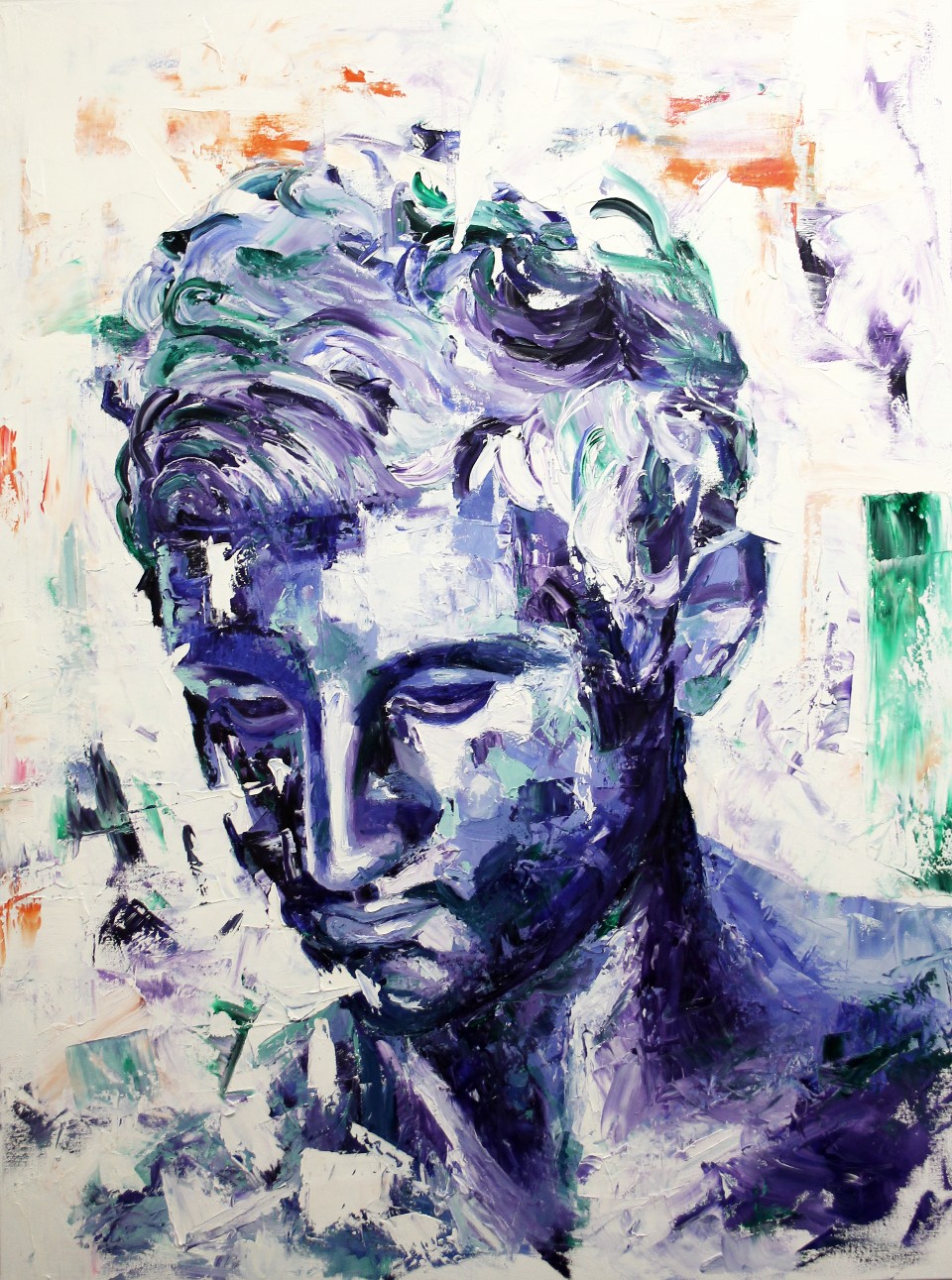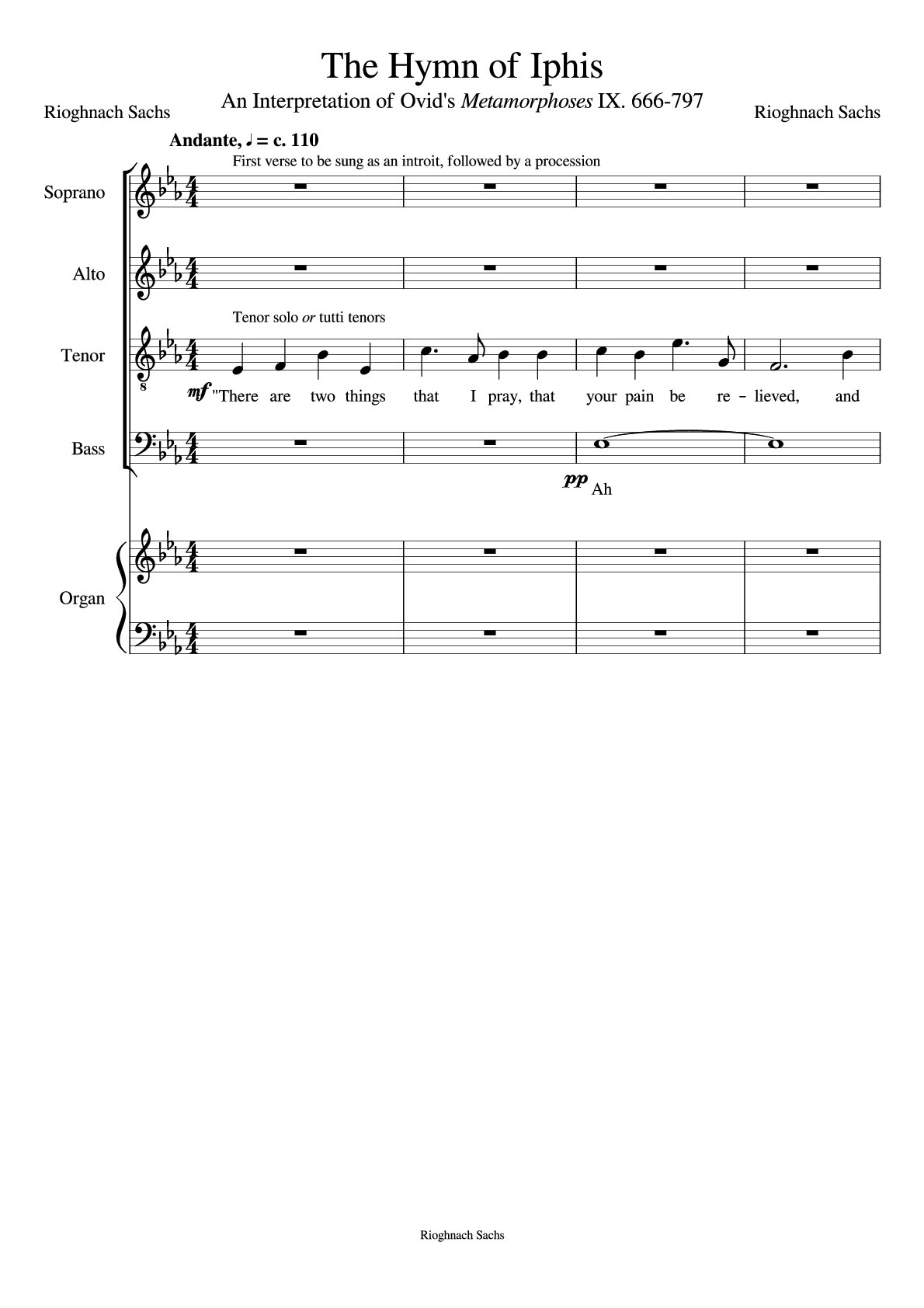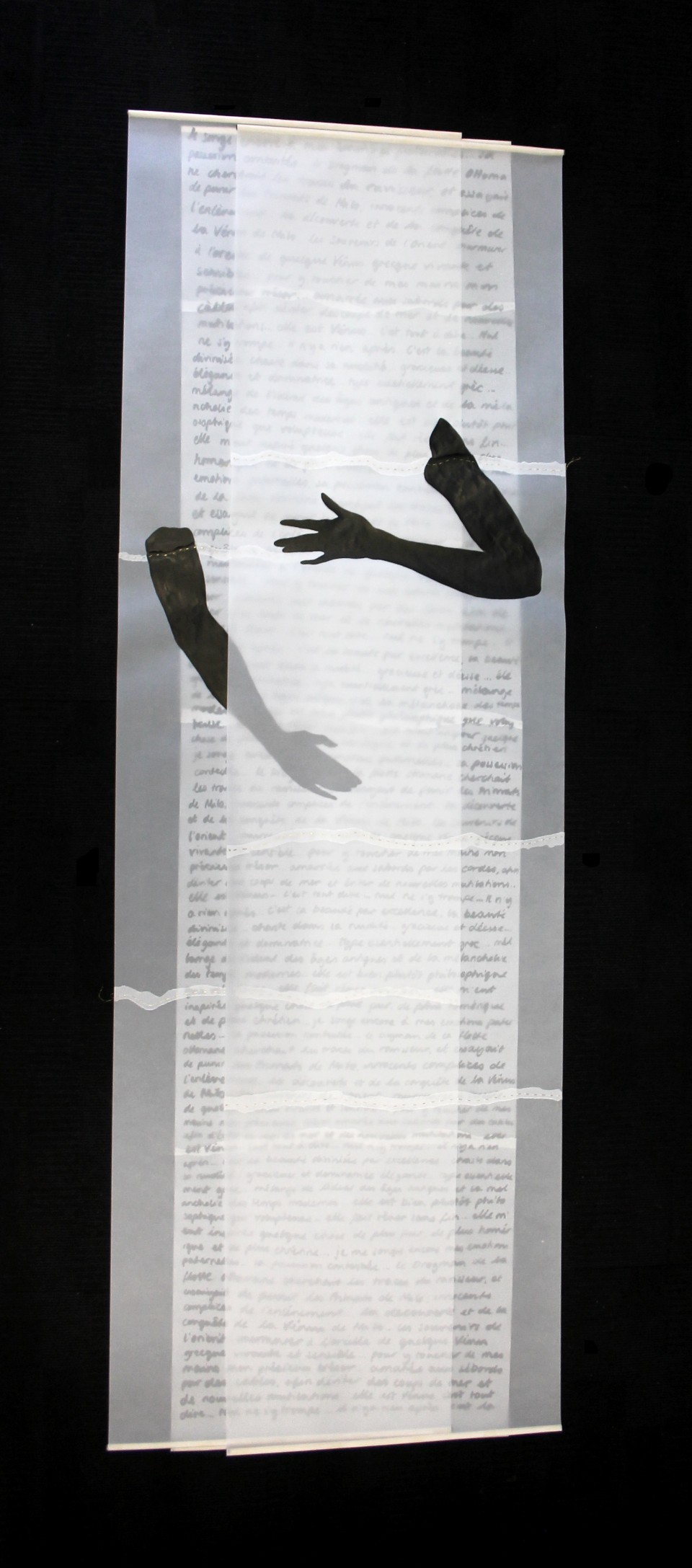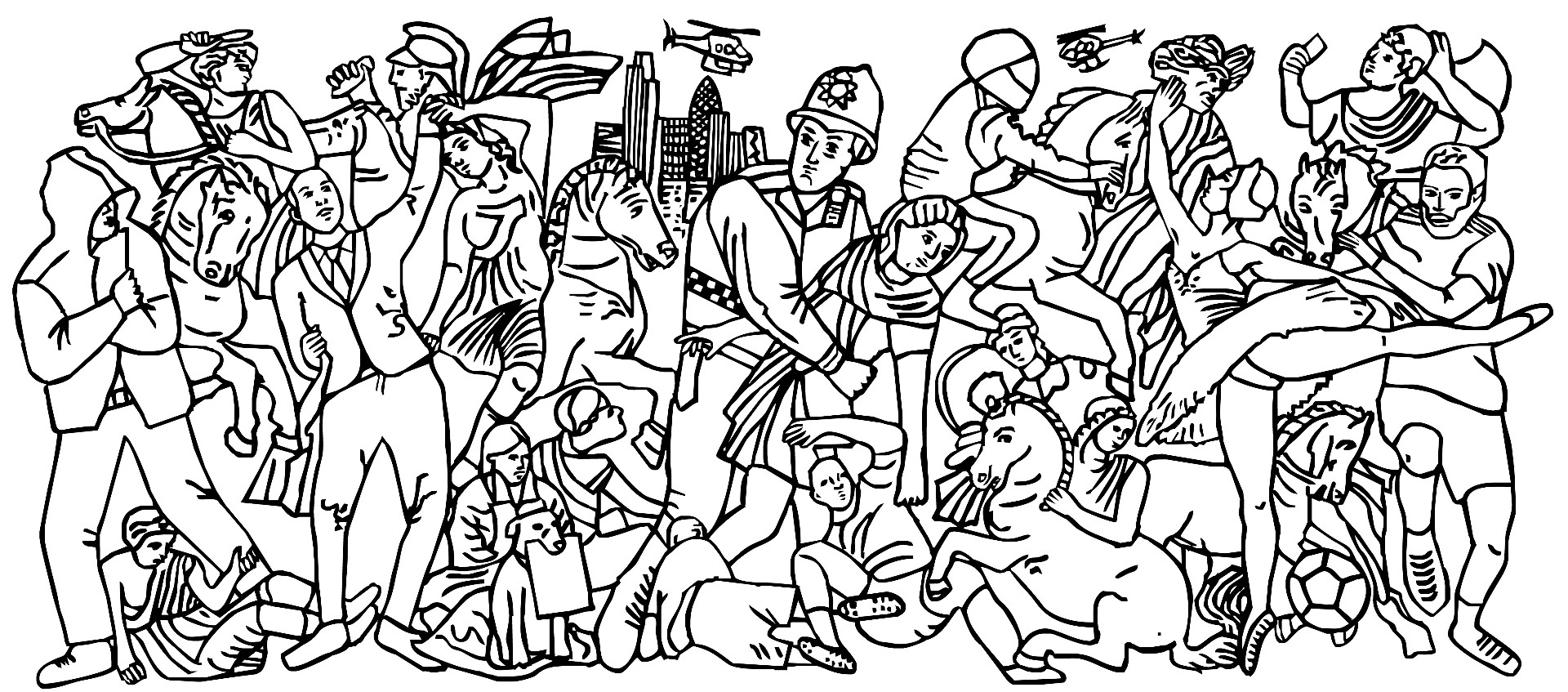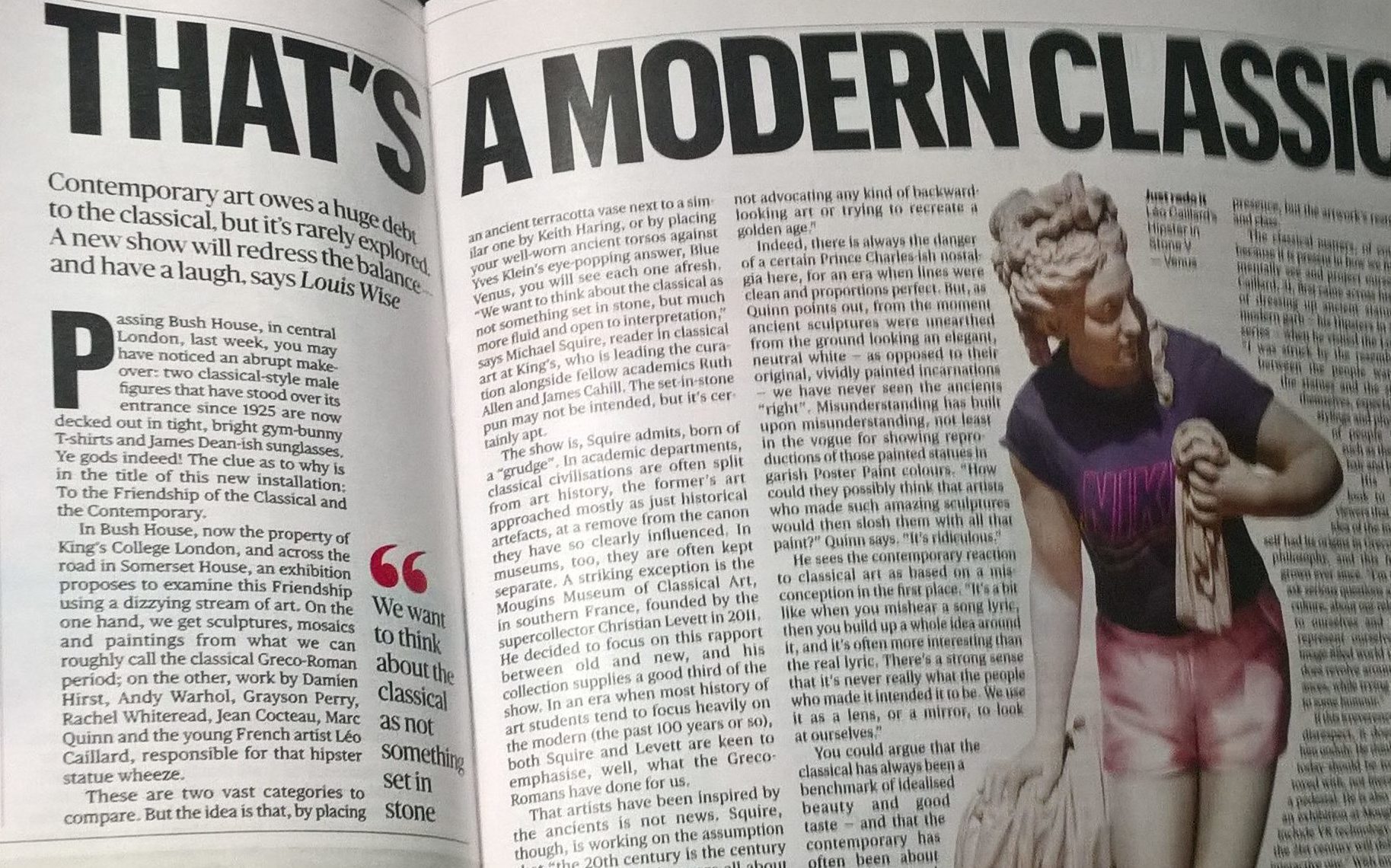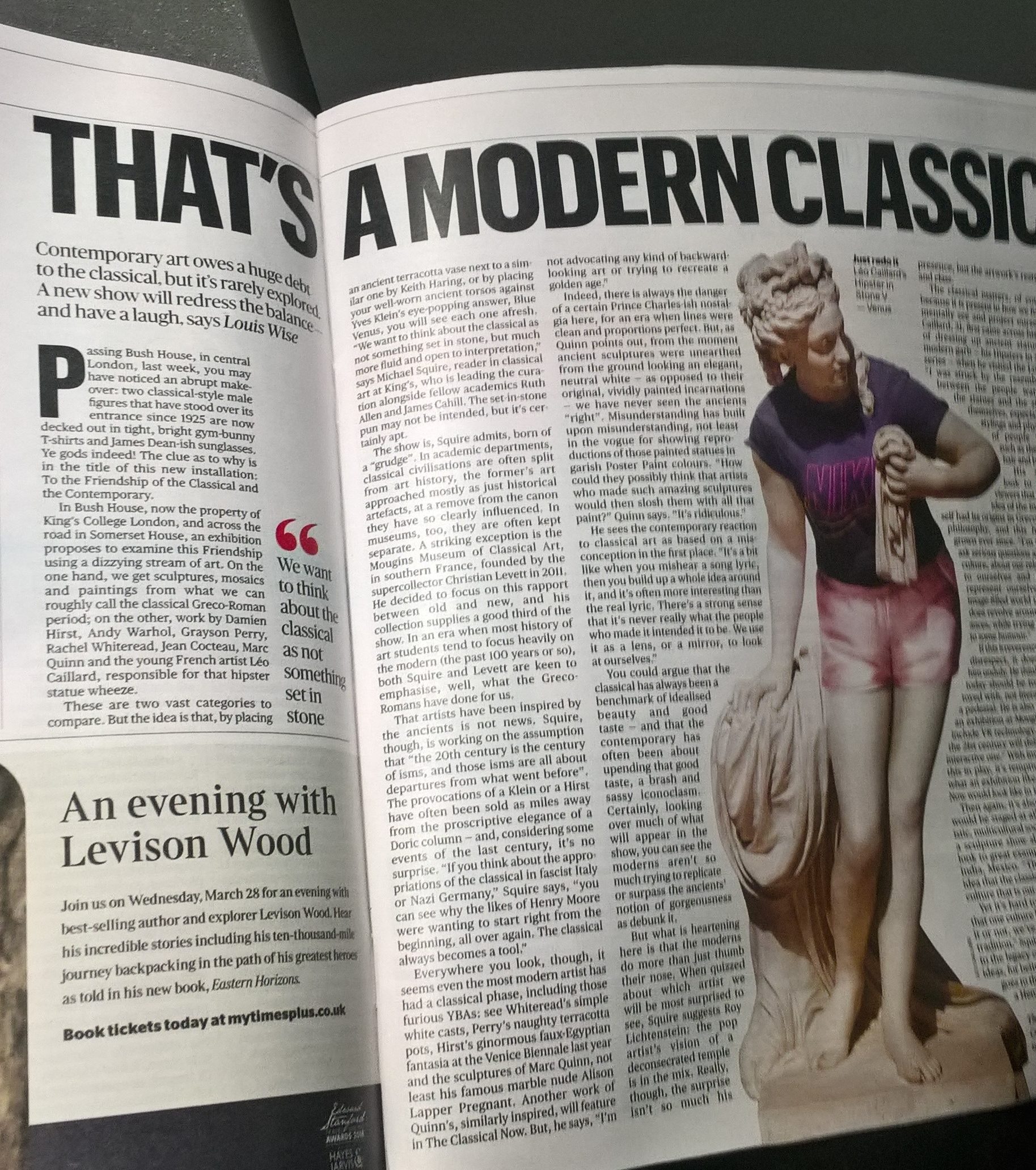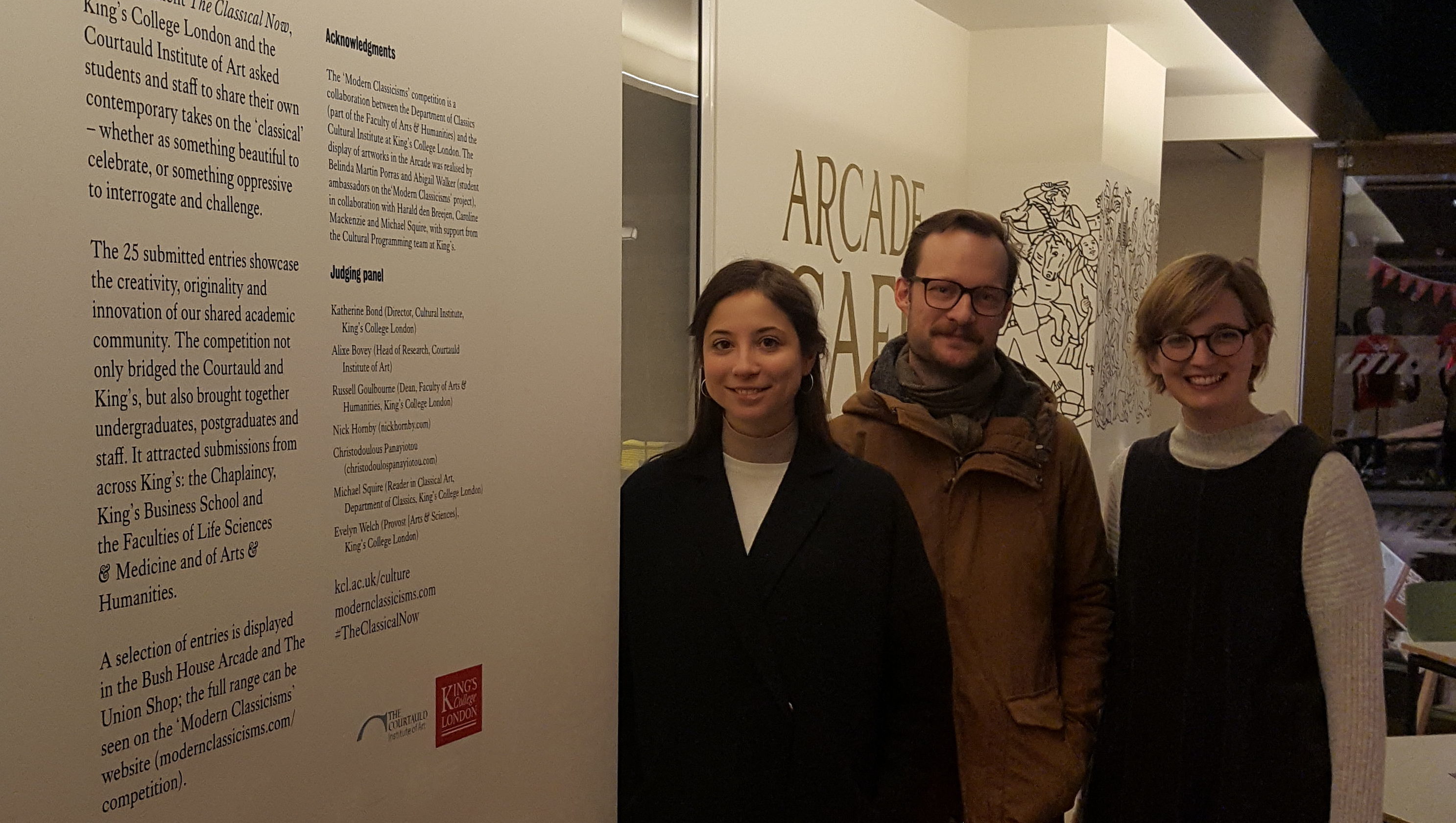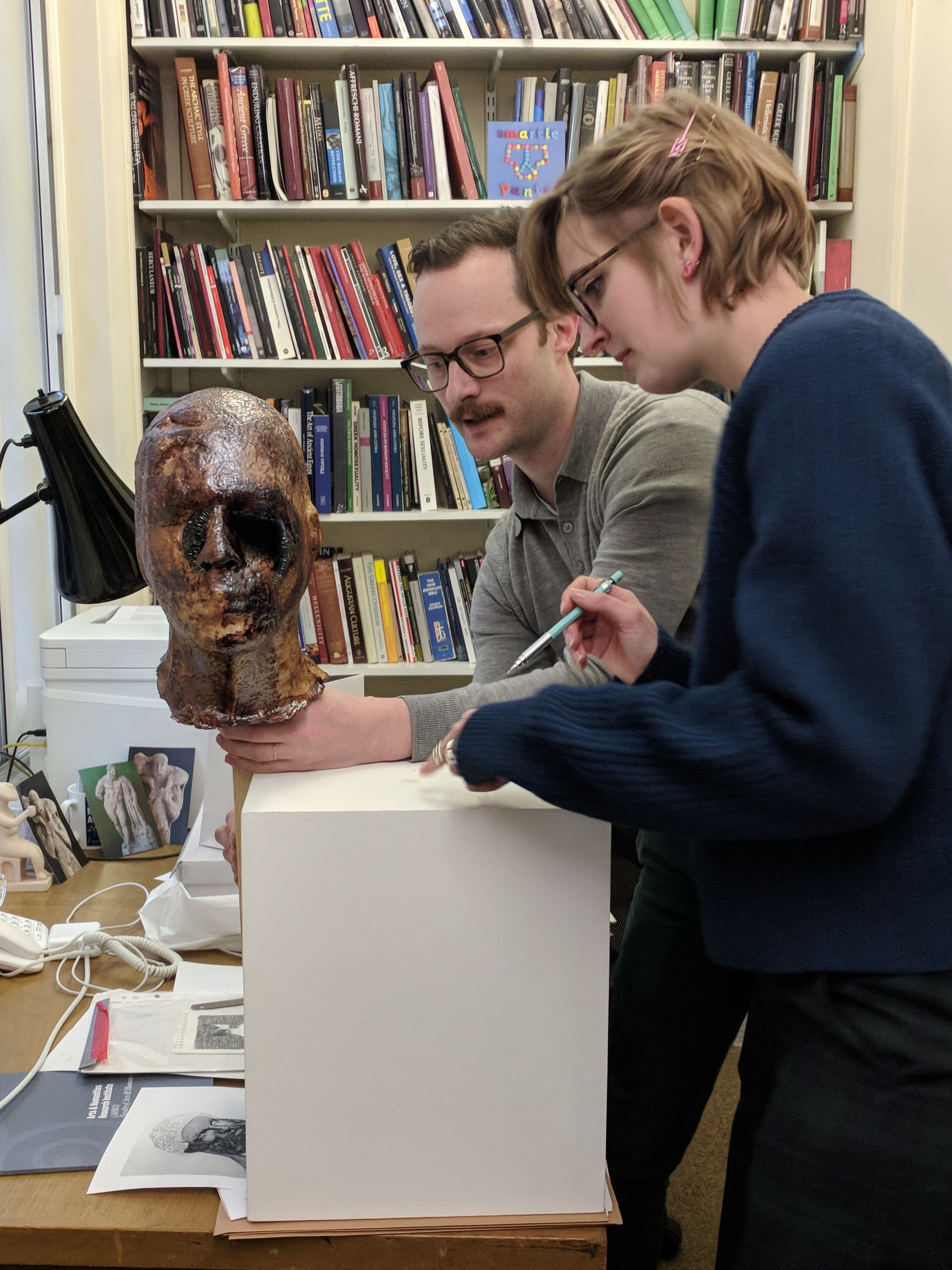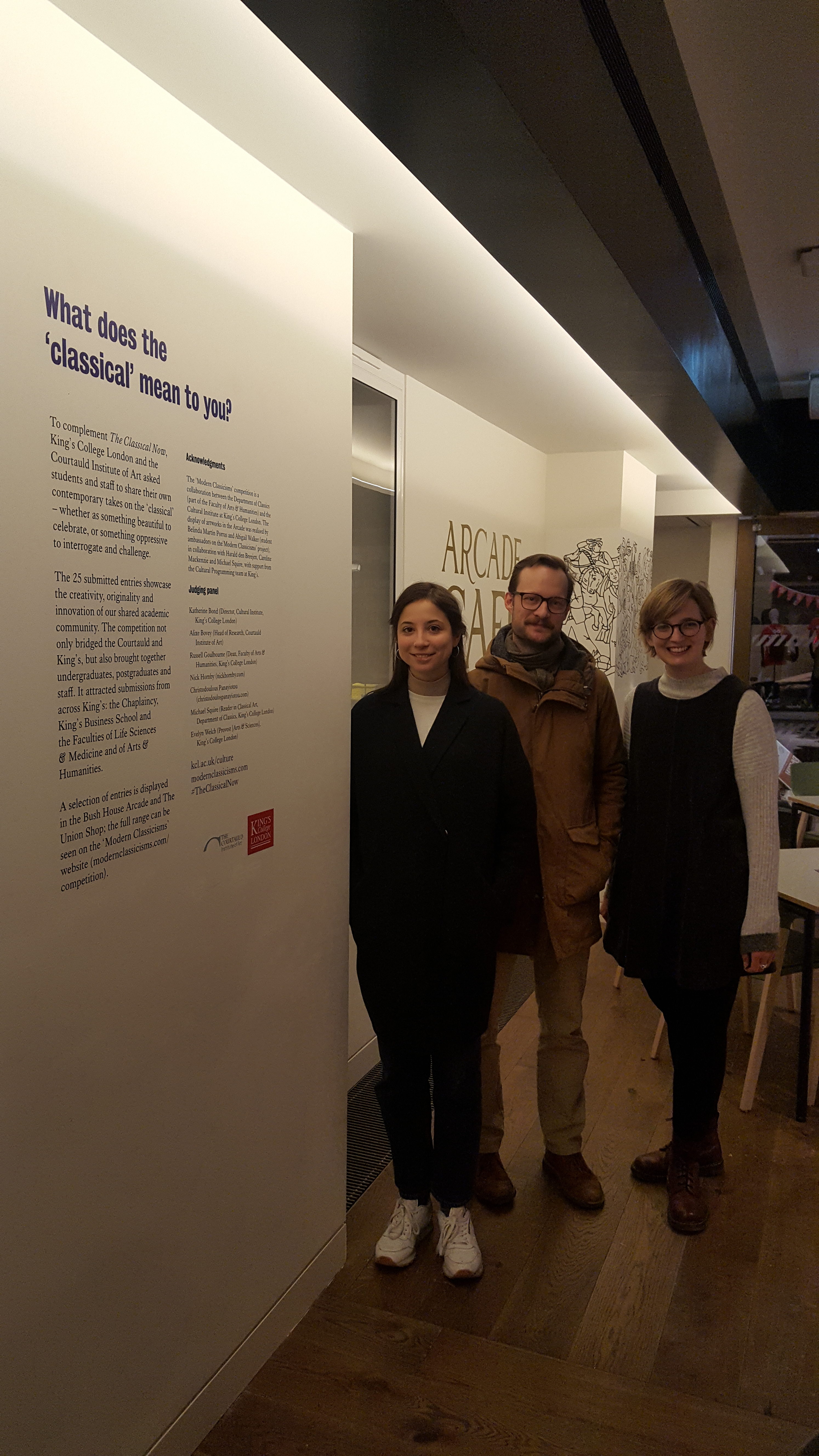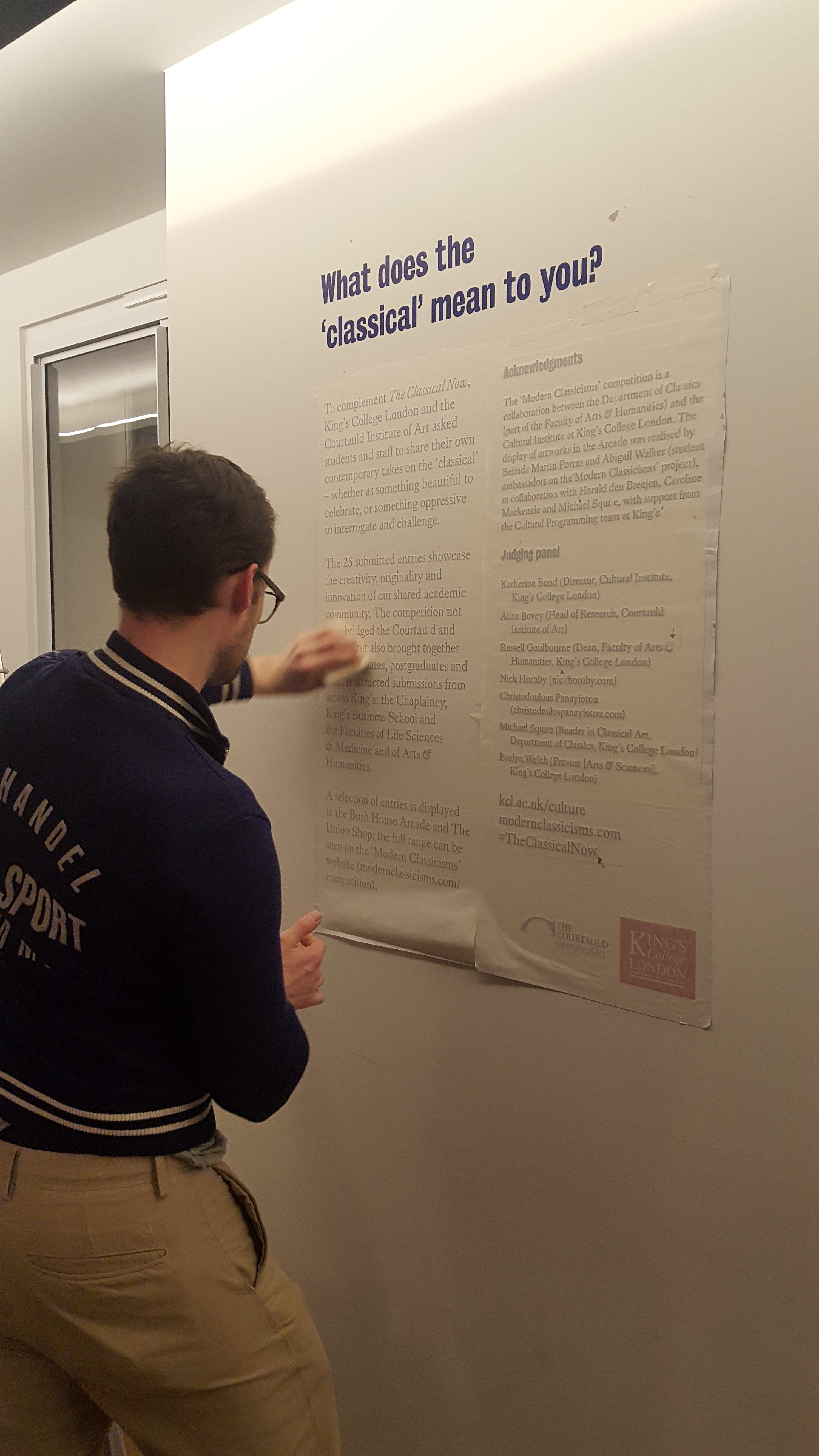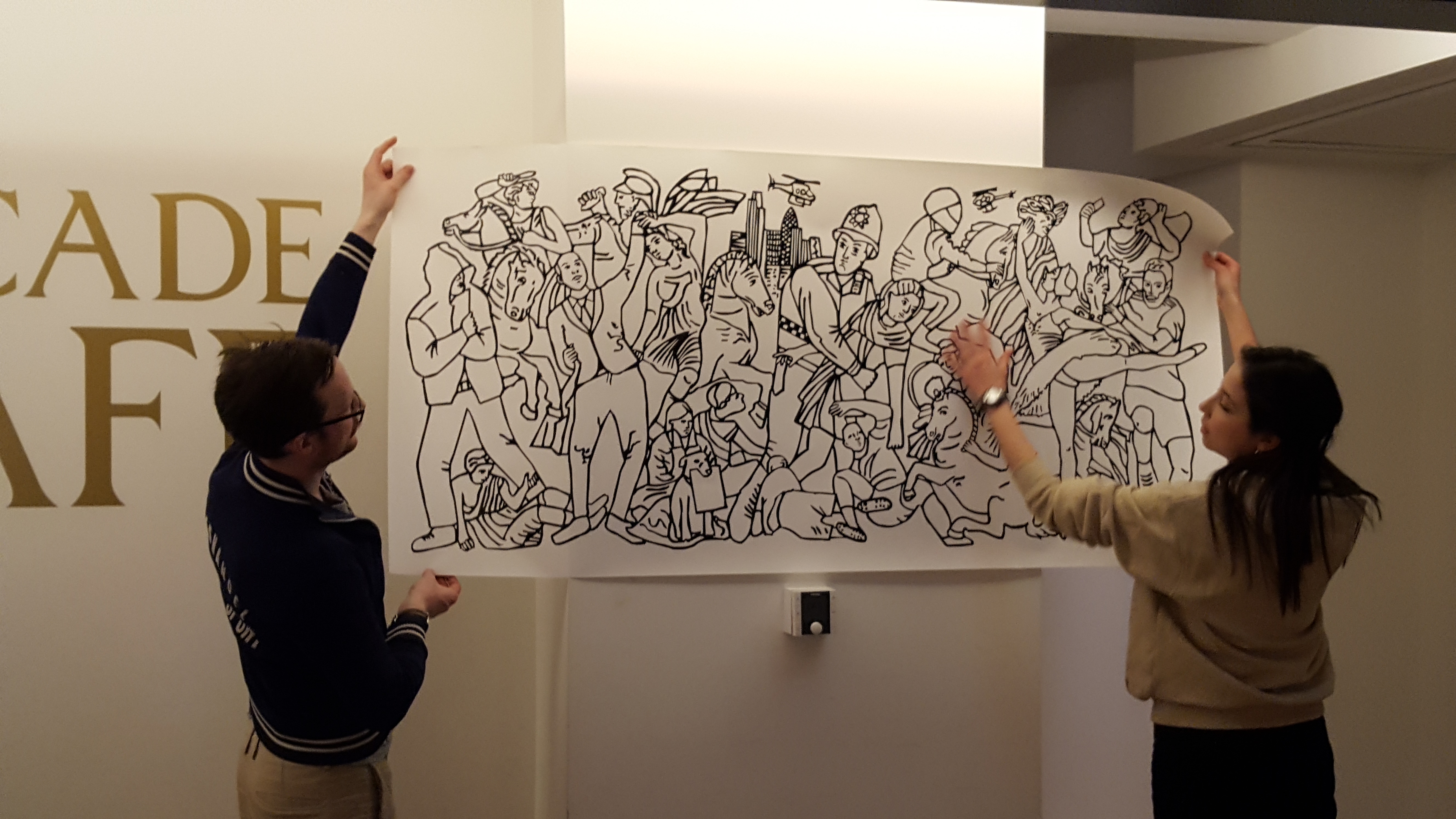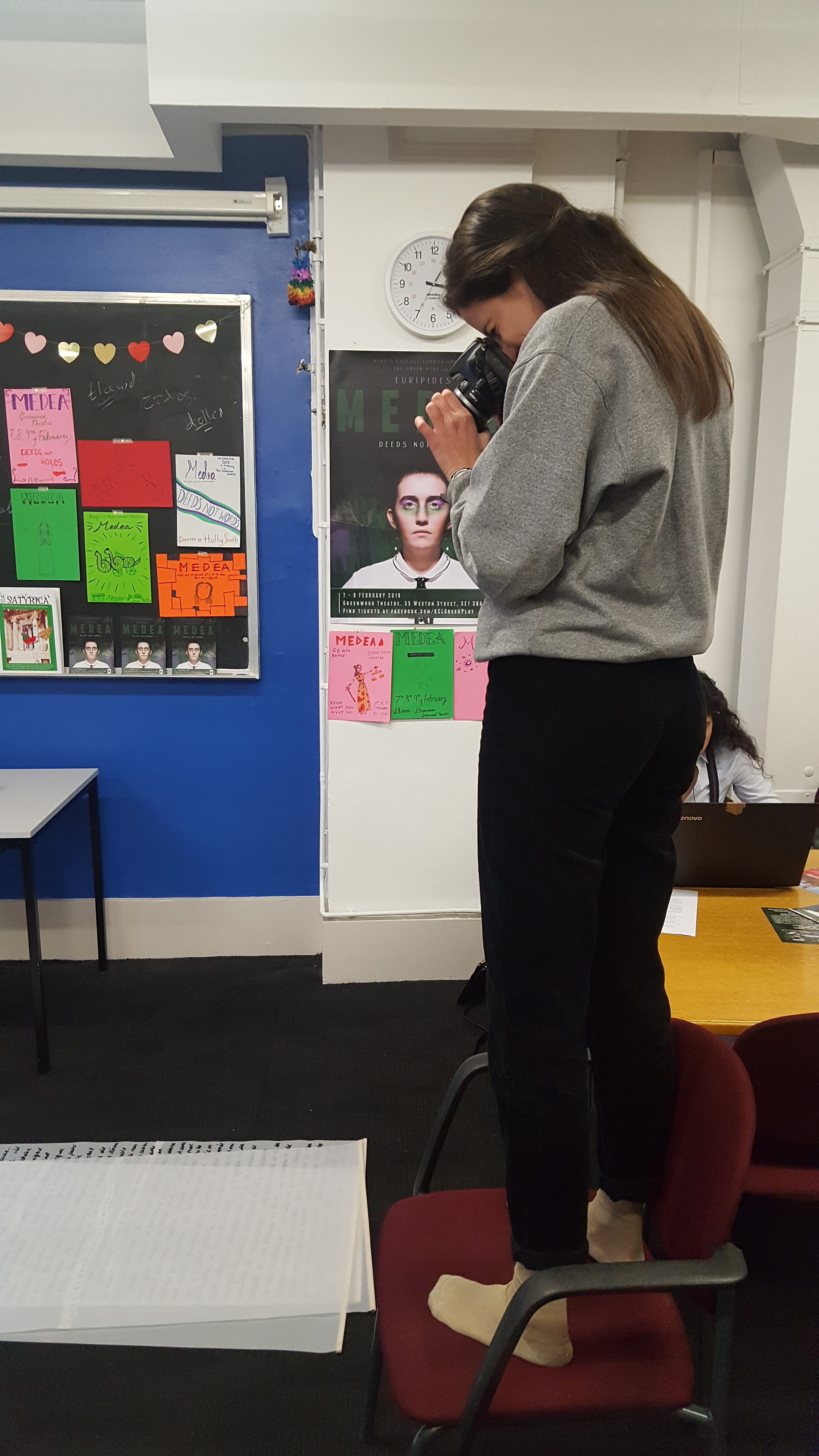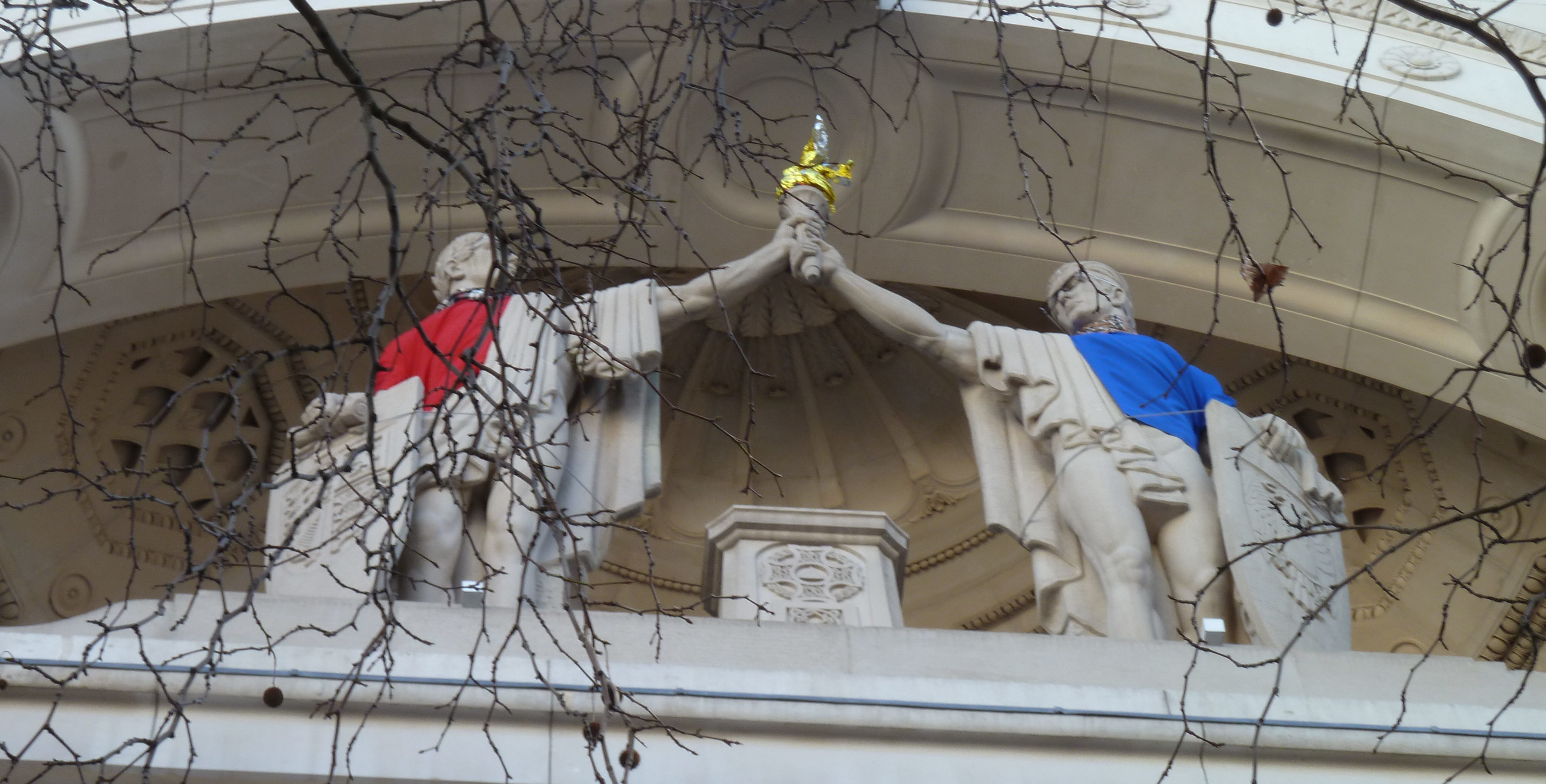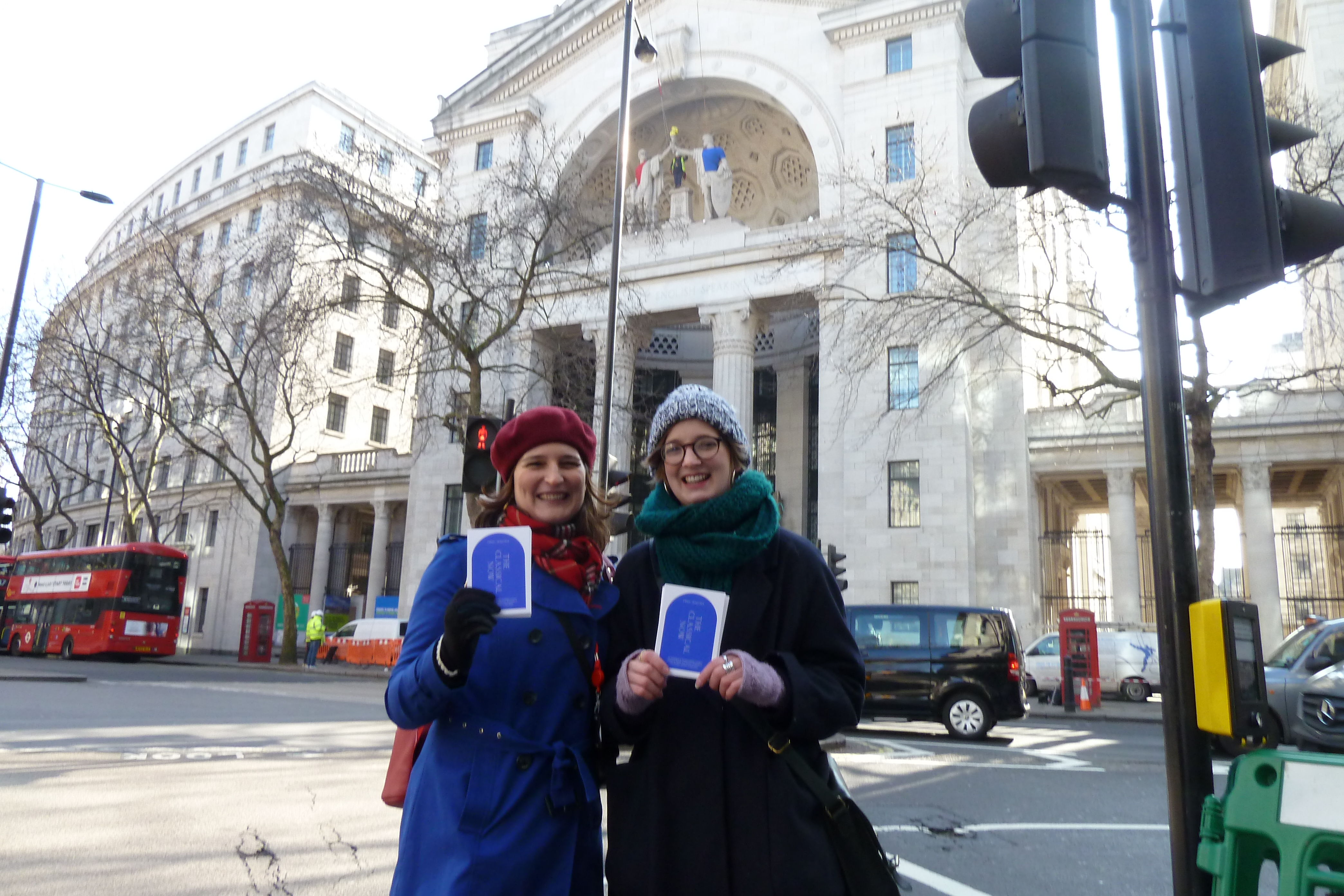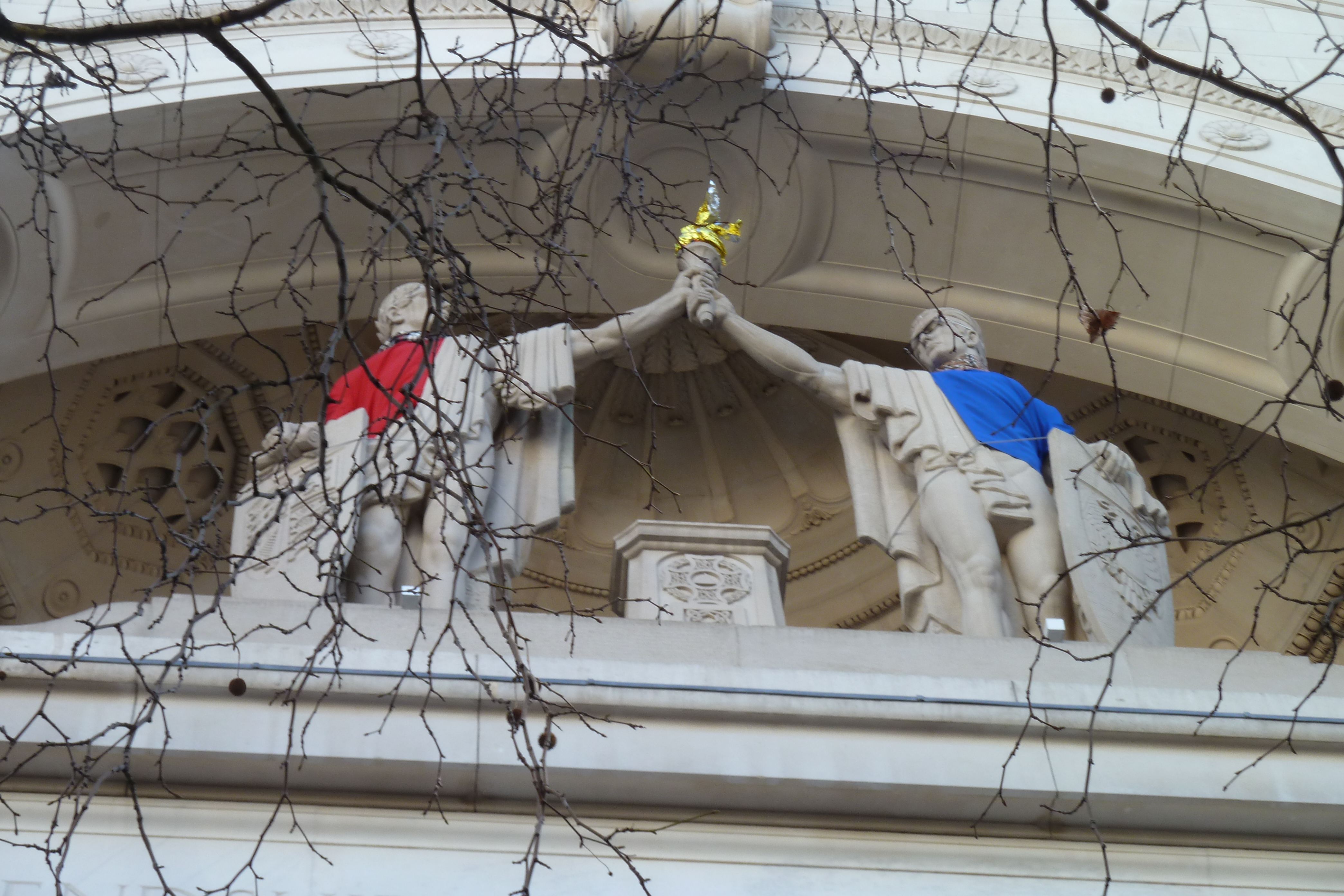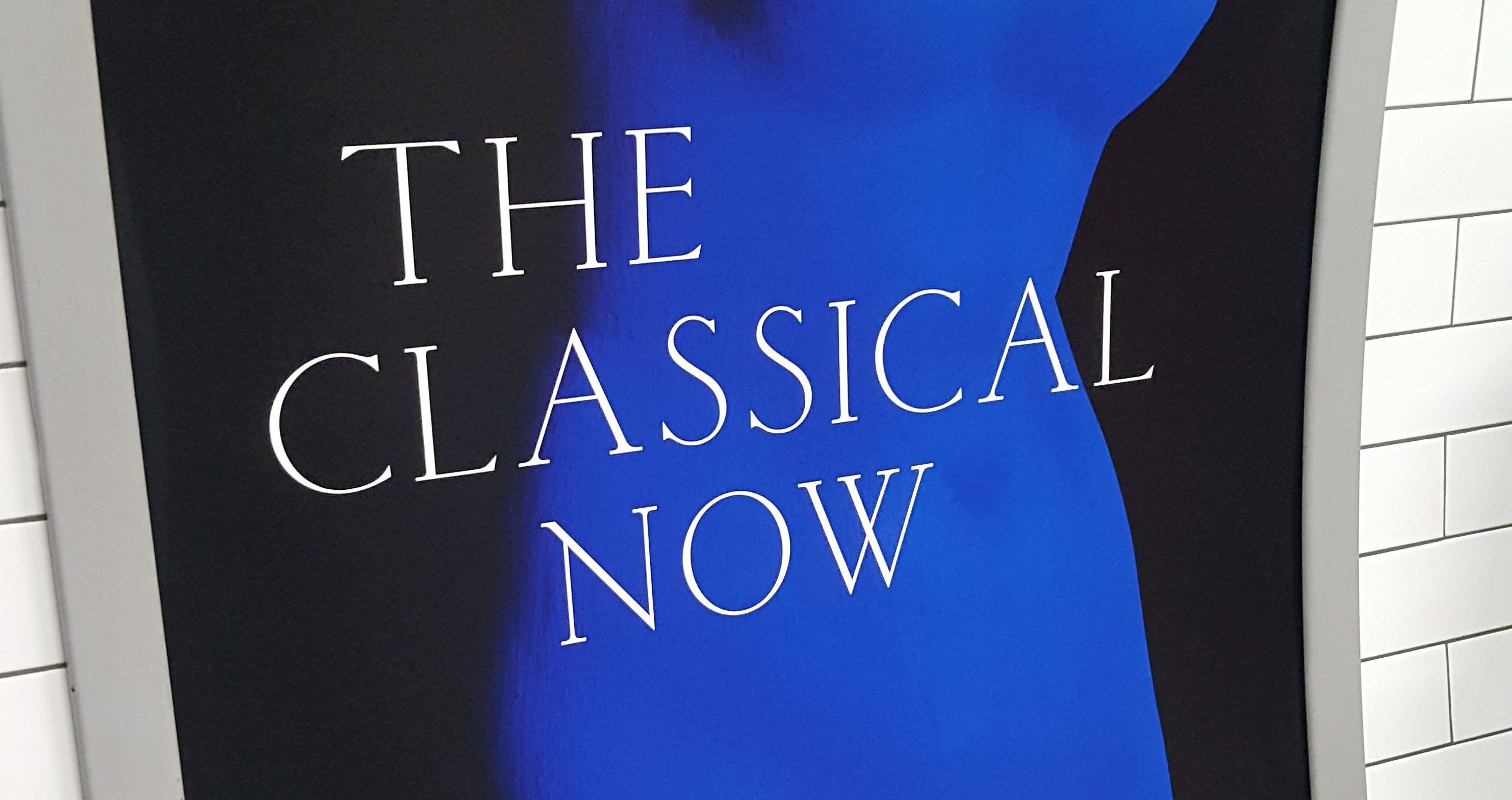PAST IS PRESENT
Past is Present
One of the most exciting things about the ‘Modern Classicisms’ project is seeing how our work here in London has in turn helped to spur other projects internationally. One case in point is the opening of Léo Caillard’s exhibition Past is Present in southern France: you can read the press release here, following the opening of the show on 16 March 2018.
Caillard’s exhibition has been timed to coincide with The Classical Now exhibition in London, and has been hosted by our partner for the show, the MACM (Musée d’Art Classique de Mougins). The Classical Now selected some twenty or so pieces from Mougins, bringing many of them to London for the first time; two of our ‘student ambassadors’ on the project (Abi Walker and Belinda Martín Porras) also spent the summer of 2017 collaborating with the Mougins team through a special Erasmus+ partnership.
Working with Caillard, our partners in Mougins – led by the indefatigable Leisa Paoli and Bénédicte Montain – consequently came up with a plan for an exhibition at MACM that complements what we have attempted in London. Part of their thinking was pragmatic – aimed at ‘filling in’ the gaps left by pieces lent to London. But another part was to ask Caillard to devise ways of developing the agenda behind The Classical Now by way of his own distinctive interventions and installations in the museum.
Caillard’s Mougins show is wholly in keeping with his tongue-in-cheek, but deeply provocative, takes on classical traditions. Among our favourite pieces is the statue Venus Sine (installed in the case where Yves Klein’s Venus Bleue usually resides – when not in sojourn in Somerset House…). Caillard transforms a bust of the goddess into a majestic spiral – installed alongside other ‘Venuses’ by the likes of Andy Warhol and Salvador Dalí.
The Mougins show has already caused quite a press sensation – with coverage in both France (cf. also here) and the UK (cf. also here). We’re also delighted that Léo should be the lynchpin between our respective UK and France exhibitions: alongside a giant print of one of Caillard’s Hipsters in Stone series in Bush House Arcade, the exterior of our London venue for The Classical Now has also been dressed up in typically Caillardian fashion.
You can read more about Léo Caillard’s work in the interview that features in the book accompanying The Classical Now – on sale, too, at MACM. Léo also features in the film about the exhibition, which can be viewed here.
Past is Present runs at MACM (Musée d’Art Classique de Mougins) from 16 March – 27 May 2018, in partnership with The Classical Now and ‘Modern Classicisms’ project at King’s College London.
RE-IMAGINING THE AMAZONOMACHY: 'MODERN CLASSICISMS' MEETS CLARA CARVAJAL
Re-imagining the Amazonomachy: ‘Modern classicisms’ meets Clara Carvajal
Belinda Martín Porras, Student Ambassador on ‘Modern Classicisms’, reports on her recent discussions of ancient and modern art with Clara Carvajal…
In February 2018 I had the chance to visit the studio of Madrid-based artist, Clara Carvajal. Carvajal is currently working on an exciting project, supported by Madrid City Council. The project is informed by one of the most celebrated and dramatic stories of classical mythology: the Amazonomachy.
Carvajal’s work explores language as an encrypted means of communication – something that has led her to research modern-day digital and analogue graphic scripts, in turn rethinking their relationships with classical precedent.
For her series Amazonomachy 1.1, Clara Carvajal has re-appropriated the imagery of battle-scenes between the Amazons and the Greeks – as depicted on the damaged western metopes of the Parthenon. The imagery is reimagined in a series of photographic and oil works, which themselves bring together different sorts of semantic systems. Challenging a residual logocentric bias – the tendency to privilege speech over the graphic aspects of writing – her work employs a sequence of words that are styled in the manner of ‘barcoded’ Greek text, the meaning of which would only be revealed via a QR code-reader.
Sometimes those words appear duplicated, taking on an inverted direction (proceeding from right to left), as can be found in the ‘mirror-writing’ of Square Kufic script (bannâ’i or ‘masonry script’). Developed in the Middle East in the eighth century BC, this technique – used by architects and artists to adorn surfaces with pixelated patterns – anticipated the digital aesthetics of the pixel, as well as modern QR code. By emphasising the formal and decorative value of her ‘texts’, Carvajal develops the age-old paragone between language and imagery. At the same time, she seeks to reclaim the visual power and immediacy of artistic communication, at once resisting and transforming endemic cultural traditions.
From this broader perspective, Carvajal’s imagery of the battle between Greeks and Amazons takes on a larger significance. The Amazons – themselves female warriors who inhabited ‘barbaric’ lands, playing the ‘other’ to the Greeks – might be said to be fighting not just the Greeks, but also perhaps Greek logos. Just as the Amazons embody a challenge to cultural conventions, moreover, they also raise questions about myth – and the boundaries between legend and history.
Clara, you are trained as a sculptor – and in many of your photographic interventions and videos, sculptures play an important role. Did you conceive of your series Amazonomachy 1.1 as a sculptural work per se?
Yes, that’s right. I often use sculpture as a starting-point for developing my works, even if don’t always incorporate three-dimensional media strictly speaking. For example, in Amazonomachy 1.1 I ‘intervened’ in the west metopes of the Parthenon – via a superimposition of photographs, drawings and texts. Although the works are not, formally speaking, three-dimensional pieces, I wanted in a sense to evoke – with that juxtaposition of techniques – a palimpsest of new meanings.
Could you elaborate more on the idea that ‘the medium is the message’ which seems to permeate your oeuvre?
For me, every artwork has an element of communication. Communication implies conveying a message, and in my case the meanings of that message are the visual and verbal languages I show in my pieces – as well as their implications as cultural symbols. What really interests me is the ‘materiality’ of the verbal – the graphic elements of language, and their interaction with the visual ‘languages’ of art.
In your work you highlight the capacity of art to bring together different, distinct and distant visual languages in time and space, such as Kufic script with contemporary QR code. How did you come to work with the Greek alphabet? What were you particularly drawn to?
Working with both Kufic and QR scripts made me realise the barriers that inhere in languages. Alphabetisation has made us forget the extent to which reading and writing were restricted to the elite in the past, and the quasi-religious aspects attached to these activities in certain cultures. When I started creating the Amazonomachy series, I began to think about what language I should use. In the end I decided it would make most sense to develop an alphabet that somehow represented the Amazons’ own hybrid culture –between the Greek and ‘non-Greek’ worlds, and between West and East. This is why I was tempted to use the Greek alphabet in combination with the QR-Kufic script.
Images:
Amazonomachy 1.1 # 3 (2018). Oil on methacrylate, ink photography and wooden frame, 124 x 113 cm.
Kufic composition where the black and white spaces both spell ‘Allah’ (cf. here).
Detail of Amazonomachy 1.1 # 1 (2018). Oil on methacrylate, ink photography and wooden frame, 124 x 113 cm.
Clara Carvajal at her studio – showing some of the Kufic scripts examples that inspired her work.
Detail of Amazonomachy 1.1 # 14 (2018). Oil on methacrylate, ink photography and wooden frame, 124 x 113 cm.
Clara Carvajal poses in front of her Amazonomachy series. Oil on methacrylate, ink photography and wooden frame, 124 x 113 cm.
General view of Clara Carvajal’s Studio.
MARY BEARD HELPS US TO CELEBRATE THE CLASSICAL NOW AT KING'S
Mary Beard helps us to celebrate The Classical Now at King’s!
We’re delighted this week to have kicked off the Cultural Programme accompanying The Classical Now with a special opening lecture by Mary Beard.
Mary is a former alumna of King’s (where she taught from 1979–1983), and it was a pleasure to welcome her back to our campus in central London.
Mary was delivering the fifth Jamie Rumble Fund Lecture in Classical art, and spoke on the theme of ‘Mistaken Identities? Roman Emperors in Modern Art’. 400 people joined us in the Bush House Auditorium to hear the lecture – and to enjoy a private, late-night extended view of The Classical Now exhibition in the Bush House Arcade and Somerset House East Wing.
The lecture not only helped us to celebrate the exhibition. It also marked the fifth anniversary of the Jamie Rumble Memorial Fund, founded in the Department of Classics by Sandra Rosignoli, a former alumna of King’s. To read more about the Rumble Fund and its work, click here to download the fifth-anniversary brochure.
Mary’s lecture is just the beginning of our cultural programme. Details of all the events – running through to the end of April – can be found here. We much look forward to welcoming you at King’s, and hope you’ll join us in our work celebrating The Classical Now and ‘Modern Classicisms’!
THE CLASSICAL NOW - NOW OPEN!
The Classical Now – now open!
We were delighted, on Friday 2 March 2018, to open the doors of The Classical Now exhibition – which runs at King’s College London until 28 April.
The Classical Now is the largest exhibition ever staged at King’s. We have over 50 works, ranging from antiquities (pottery, mosaic, bronze bust and marble statuette), through works by the likes of Picasso, Henry Moore and André Derain, right up to pieces by contemporary artists such as Damien Hirst, Alex Israel, Louise Lawler, Grayson Perry and Rachel Whiteread. The show is so big that we’ve had to split it across two sites – The Arcade at Bush House (King’s College London, Strand, WC2B 4PJ), and the Inigo Rooms in Somerset House (King’s College London, Strand, WC2R 2LS).
The exhibition is open Tuesdays to Saturdays, 11am to 5pm. What’s more, admission is free – and open to all. Alongside the exhibition itself, we’ve organised an extensive cultural programme of events and festivities, some of them timed to coincide with the Association for Art History Annual Conference from 5-7 April 2018. We hugely hope you’ll be part of #TheClassicalNow, and look forward to welcoming you at King’s!
THE PRIVATE VIEW
The private view
Thursday 1 March had been months in the planning: since summer 2017, the date had been earmarked for the private view and party to celebrate the opening of The Classical Now exhibition at Bush House and Somerset House.
The invitations for the event were sent out in January: while we all hurried to bring the various parts of the exhibition together, we had 1 March as our fixed deadline. Working with the brilliant Cultural Programming team at King’s, we had contingency plans for most eventualities. But it’s fair to say that the final week of February threw up a number of challenges. Two stand out in particular. The first was the UCU strike. Thankfully, we had received most of the deliveries before picket lines formed at King’s. But one object – a wonderful British Museum statue of Venus – had in the end to be hand-carried across the King’s campus before being installed in Somerset House. The second challenge was the weather – ‘Storm Emma’, as it came to be known . As snow brought Britain to a standstill (‘Emmageddon’), there was much anxiety about what to do with our opening. At one stage, there was even talk of postponing the event…
We are very glad that we didn’t. Although train cancellations and general travel chaos meant that some people were unable to join us, we were able to celebrate the private view with nearly 300 people. The brilliant team at King’s Venues did us proud, with drinks receptions both in Bush House Arcade and Somerset House. There were speeches in Bush House by Evelyn Welch (Provost for Arts and Sciences at King’s), Christian Levett (Founder of MACM [Musée d’Art Classique de Mougins]) and Michael Squire (project lead of ‘Modern Classicisms’). For those closely involved in the exhibition, the celebrations continued with an after-party dinner at Fernandez and Wells in Somerset House – and truth be told, an after-after-party that extended into the early hours of the following day… As the snowstorms continued, nothing chilled our spirits. And we were delighted to celebrate the culmination of all our hard work with so many friends, partners and artists.
WINNERS OF THE MODERN CLASSICISMS COMPETITION ANNOUNCED!
Winners of the Modern Classicisms competition announced!
There’s been much talk on our website about the competition launched by the ‘Modern Classicisms’ team for students and staff at King’s College London and The Courtauld Insitute of Art.
With 25 entries, the task of deciding the winners of the competition was hugely difficult. We enlisted a panel of 6 judges – including artists and the senior management teams from both King’s and The Courtauld. All of the entries were worthy of the prizes, and we were delighted to invite all those who entered the competition to the private view of The Classical Now on Thursday 1 March.
Many congratulations to all those who took part. The final winners were announced on 1 March:
1st prize: Charlotte Ellery (King’s: Department of Classics [Undergraduate]): First Glance. Oil painting.
2nd prize: Rioghnach Sachs (King’s: Department of Comparative Literature [Postgraduate]): Hymn of Iphis (Lesbian Hymn I). 4-part choral composition, with organ and harpsichord, supplied with recording.
3rd prize (joint): a) Svitlana Biedarieva (Courtauld Institute of Art [Postgraduate]): Londonomachy. Digital print on HP wallpaper. b) Connie Bloomfield (King’s: Department of Classics [Postgraduate]): Venus Reconstructed. Sculpture.
All winning entries are displayed in Bush House Arcade as part of The Classical Now – alongside works by the likes of Picasso, Edward Allington, Sacha Sosno, Marc Quinn and Damien Hirst. We’ve also displayed a selection of other works submitted as part of the competition – and a screen showcasing all entries. If you can’t make it to Bush House, then you can view all of the competition entries here.
The four winning entries showcase the huge creativity of our shared King’s and Courtauld community. We’re particularly pleased with the diversity of artistic media – painting, 4-voice choral hymn (supplied with recording), digital print and sculpture.
The ‘Modern Classisicms’ competition has been managed by our hugely talented student ambassadors, Belinda Martín Porras and Abigail Walker, with assistance from Harald den Breejen and Caroline Mackenzie. You can read more about their experiences – and see photos of the team in action – in a separate blog.
HITTING THE PRESS
Hitting the press!
One of the most rewarding parts of organising an exhibition is when the world takes notice. The opening of The Classical Now on 2 March attracted attention from all manner of publications – both online, and in print. We were delighted that both The Telegraph and The Times ran with photographs of Léo Caillard’s wonderful Bush House installation in the week running up to the opening. We’ve also had preliminary features in publications like Time Out and The Arts Newspaper – as well as tie-in features with Minerva, Elephant and The Financial Times.
It’s an auspicious beginning, and we very much hope the favourable coverage continues. You can join in the conversations using the exhibition hashtag, #TheClassicalNow. Most importantly, we hope people will come and see for themselves what all the coverage is about!
A DISPLAY OF 'MODERN CLASSICISMS' WORK BY STUDENTS AND STAFF
A display of ‘Modern Classicisms’ work by students and staff
Abi Walker, one of the Student Ambassadors on the ‘Modern Classicisms’ project, explains the thinking behind her co-curated display of student and staff work in Bush House Arcade.
About a month ago, Michael Squire asked Belinda Martín Porras and me if we would like to co-curate an exhibition displaying some of the work submitted to our ‘Modern Classicisms’ competition. After weeks of making and handing out flyers last autumn, and after promoting the competition on social media, we jumped at the chance: it was an opportunity to see the project through to the curatorial stage, and to display some of the wonderful works that we had received before the January 2018 deadline.
With such fantastic entries, the process of narrowing down what to display was hard enough, before we even got to practicalities. Despite the challenge of installing an exhibition into a public café and shop space, the display nicely embeds itself into the heart of student- and staff-life at King’s. We have a selection of works on display in the space – including choral hymns, sculpture, paintings and drawings – alongside a screen showing all of the entries (so that every single submission could be featured). The entries can also be viewed on our website. The display is not only a testament to the enduring classical legacy, but also to the fervent creative community at both King’s College London and The Courtauld Institute of Art.
Curating the student and staff display has been a tremendous amount of work. But it also has been a wonderful learning experience. Standing back at the private view on Thursday 1 March, admiring the final product, made every email and proof-read worth it. Belinda and I hope to have a career in curating: this project gave us both a little taste of the world of exhibitions and has left us hungry for more. We are immensely grateful to the people who helped us see the project through: Harald den Breejen, with his assiduous patience and practical creativity; the team at Cultural Programming, for their enduring support; Caroline Mackenzie, who helped us with the process of soliciting entries from September through to January; and Michael Squire for smiling even in the face of adversity! Bring on the next exhibition!
The display of competition entries will be open alongside The Classical Now in Bush House Arcade and Union Shop. The Classical Now runs in Bush House Arcade and Somerset House East Wing until 28 April. The winning entries in the competition were announced on 1st March: details can be seen here.
OH LÀ LÀ
Oh Là Là
Caroline Mackenzie, one of three student ambassadors on our project, offers her own take on Léo’s installation at Bush House. Huge thanks to both Caroline and Abi Walker for helping us with managing the work over the weekend!
Freezing temperatures, icy winds and heady heights: these did nothing to curb the enthusiasm of the team that led a daring and dynamic stunt in London this weekend, as part of the preparations for The Classical Now exhibition at King’s.
Léo Caillard – a Paris based artist who earned international renown for his Hipsters in Stone series (2012–2016), in which he dressed classical statues in contemporary attire – was commissioned to produce a new site-specific installation for the exhibition. Until yesterday, the details of his adventurous project were top-secret, known only to the inner conclave involved in installation planning.
However, with the superb work of a team from Overbury, cranes were manoeuvred into place outside the Aldwych entrance to Bush House. Abseilers deftly descended from the roof, until they reached the treble life size statues which tower over the view of Kingsway below.
Caillard, who had worked from architectural plans of the building and site visits, was lifted on the crane so that he could dress the colossal statues in eye-catching coloured garments (‘red for the heart and emotion, blue for thought and mind’); he adorned the torch which they hold in shining gold – for added realism, the gold foil is also designed to flutter in the wind. Appropriately (given the Arctic weather conditions), he even accessorised the two personification statues with plaid scarves; for an intellectual touch, the statues have been given glasses.
As the stone characters came to life in their novel attire, passers-by stopped to stare and to engage in conversation with some of the team from The Classical Now, who were on hand to distribute flyers and invite members of the public to the exhibition. The response was fantastic: Léo had created quite a stir, as individuals started to post their snaps on Instagram and Twitter – the first to spread the word on social media was a photographer who was en route from London Fashion Week and could not resist the striking image!
Several hours later, Caillard’s work was complete. As he looked up from ground level to admire the final product, his modest response was ‘pas mal’! We think it is ‘magnifique’ but don’t take our word for it – check out the photographs below and, even better, please come along to Bush House and The Inigo Rooms (Somerset House East Wing) between 2 March and 28 April: Caillard’s creation will be one of many ‘Modern Classicisms’ which we hope will inspire and delight you! Tell us what you think, too (#TheClassicalNow).’
#THECLASSICALNOW HITS THE LONDON UNDERGROUND
#TheClassicalNow hits the London Underground!
One of the things that’s exciting about any exhibition is the moment when the publicity kicks into action. We had planned marketing for The Classical Now way back in autumn 2017: the poster was finalised before Christmas – after long and protracted debates about format, wording and imagery. But it was only this week that the posters have appeared across the Tube, ready for our opening on Friday 2 March.
Our wonderful designer, Martin McGrath, came up with a poster that has maximum visual impact. We hope it won’t ruin the surprise too much to say that the literal poster-girl – Yves Klein’s Blue Venus – is one of the pieces in our show. At the same time, we wanted to make the poster speak visually, rather than crowd it in text. Whatever the campaign does for visitor numbers (we’re expecting these to be high in any case), we’ll be pleased if this little splash of colour brightens up the commuting week.
Posters are now going up at around 30 different stations across London. If you spot Venus, please do share your images with us at #TheClassicalNow, #modernclassicisms, @ModClassicisms @modernclassicisms

